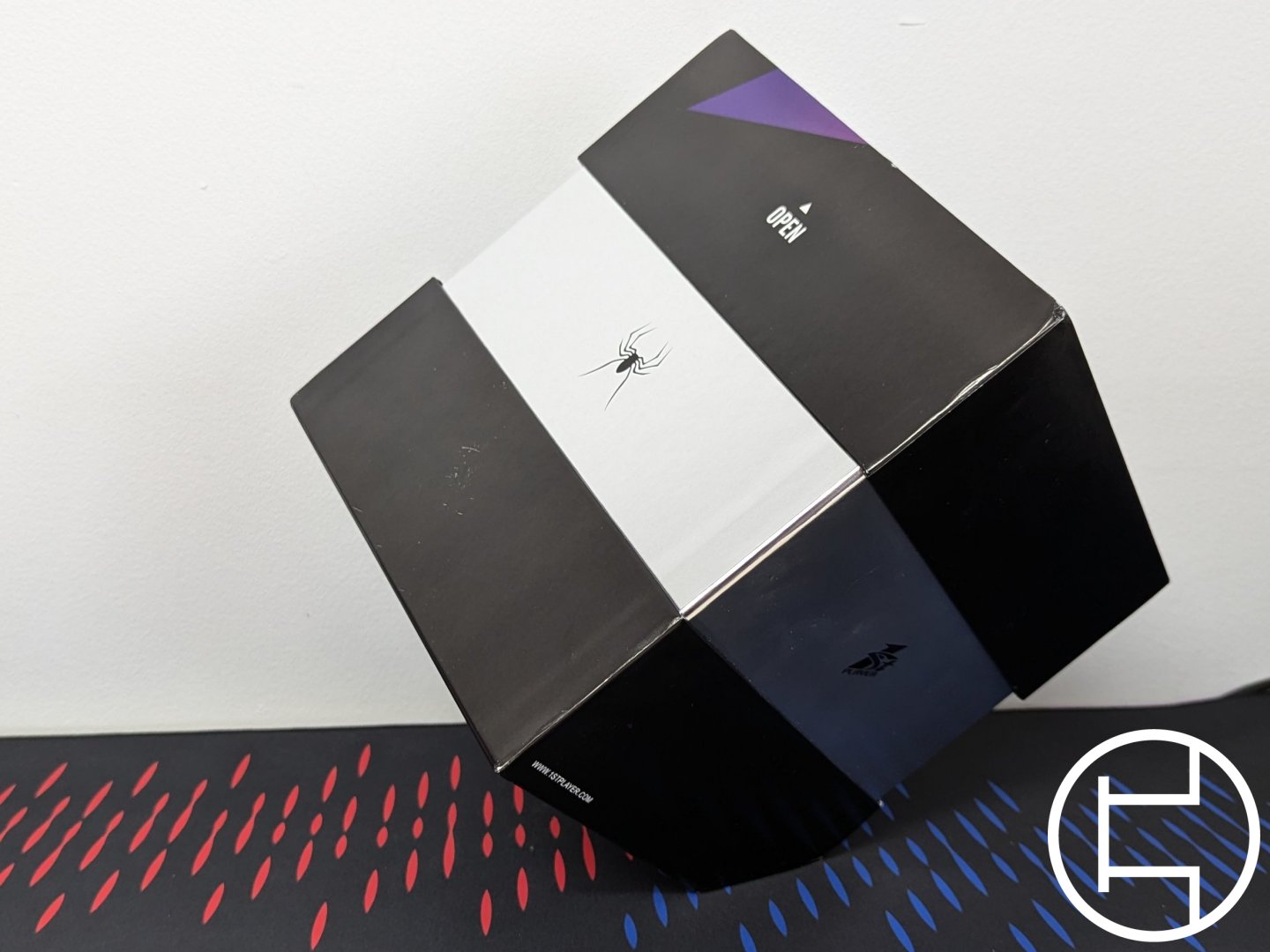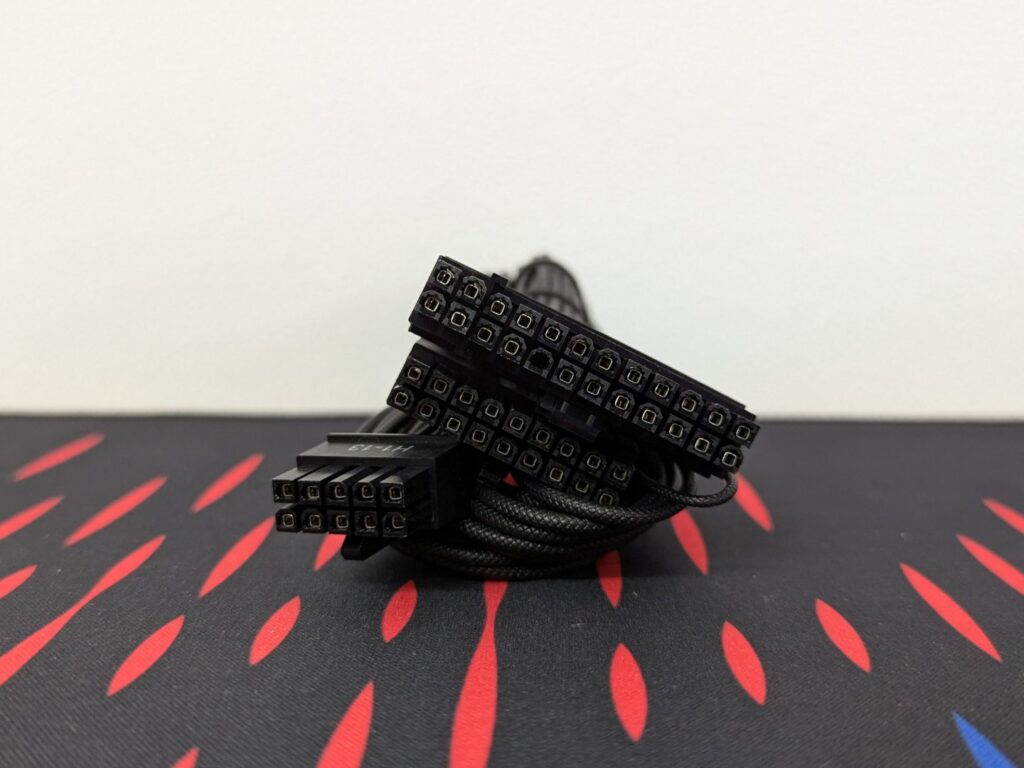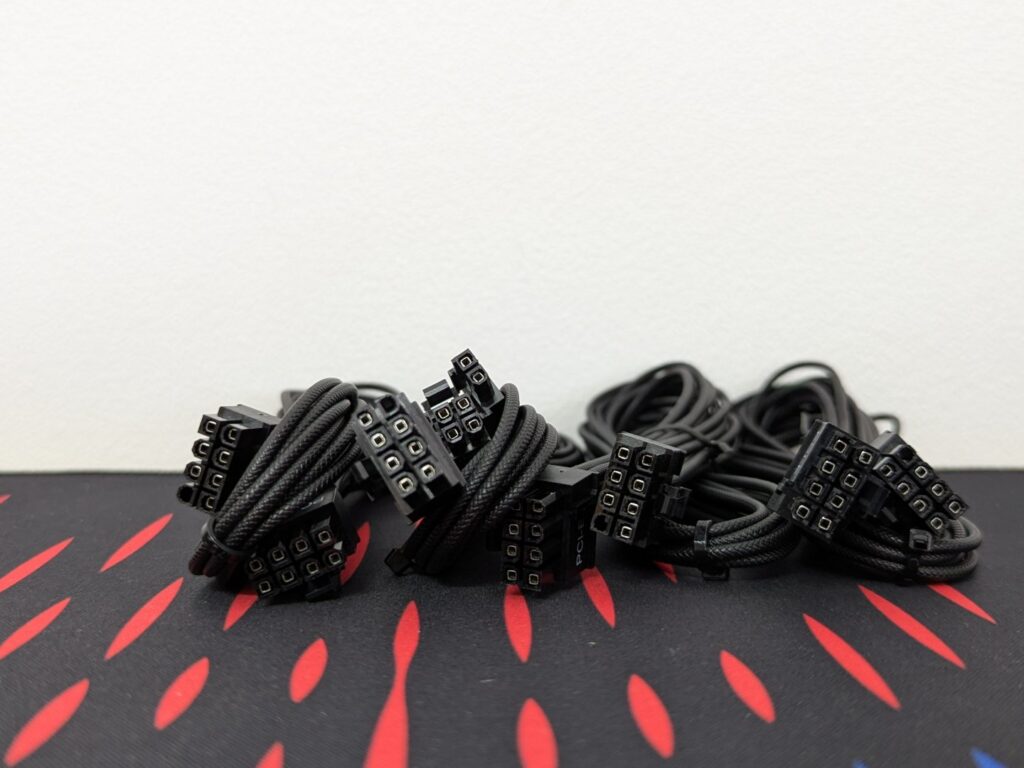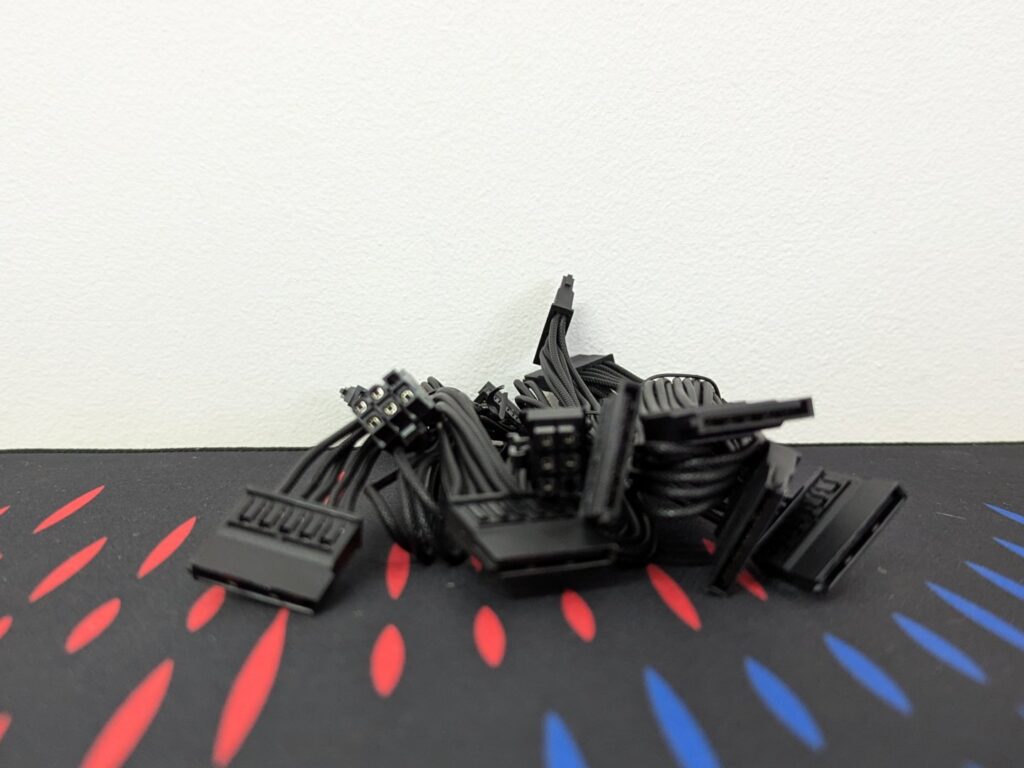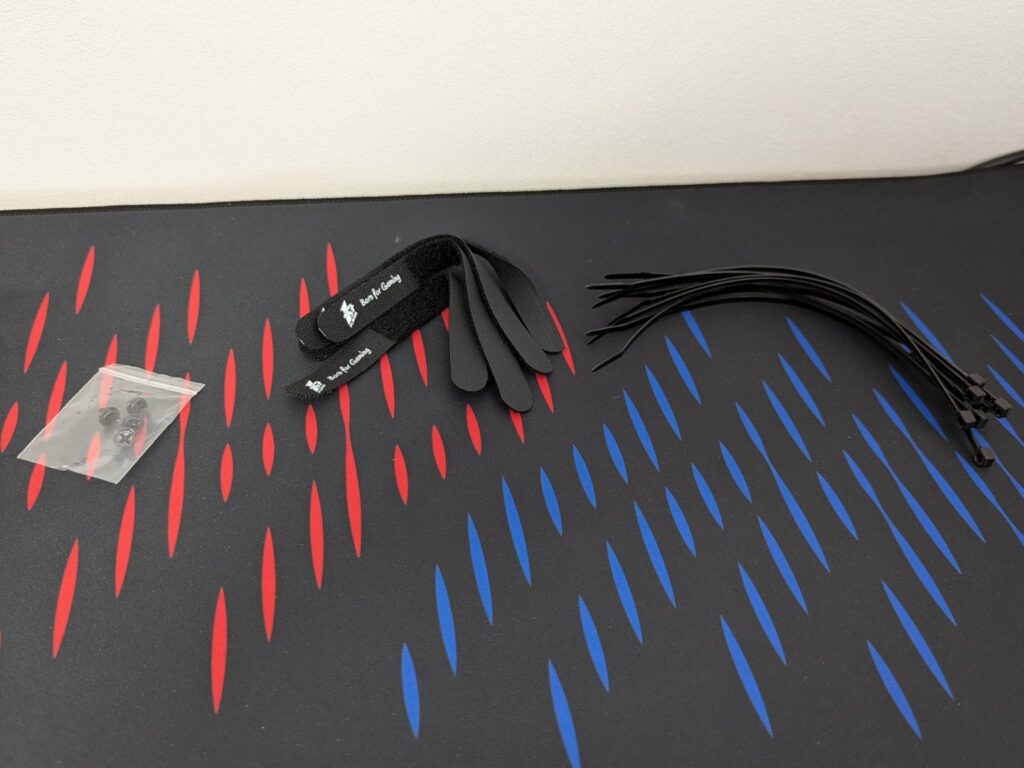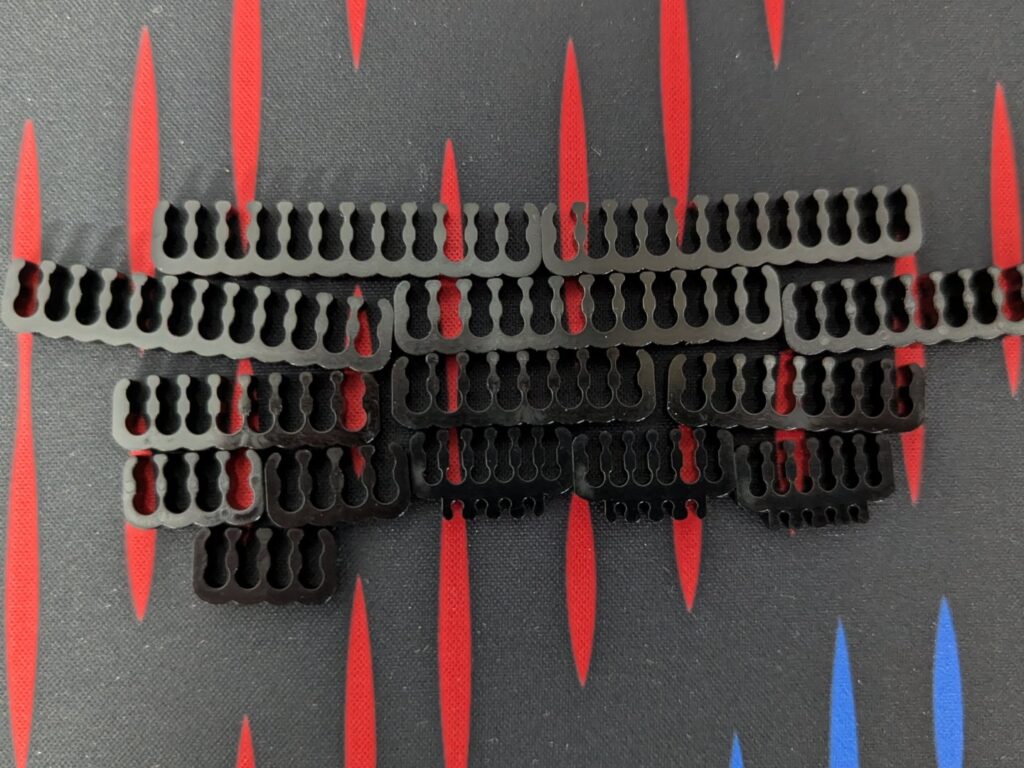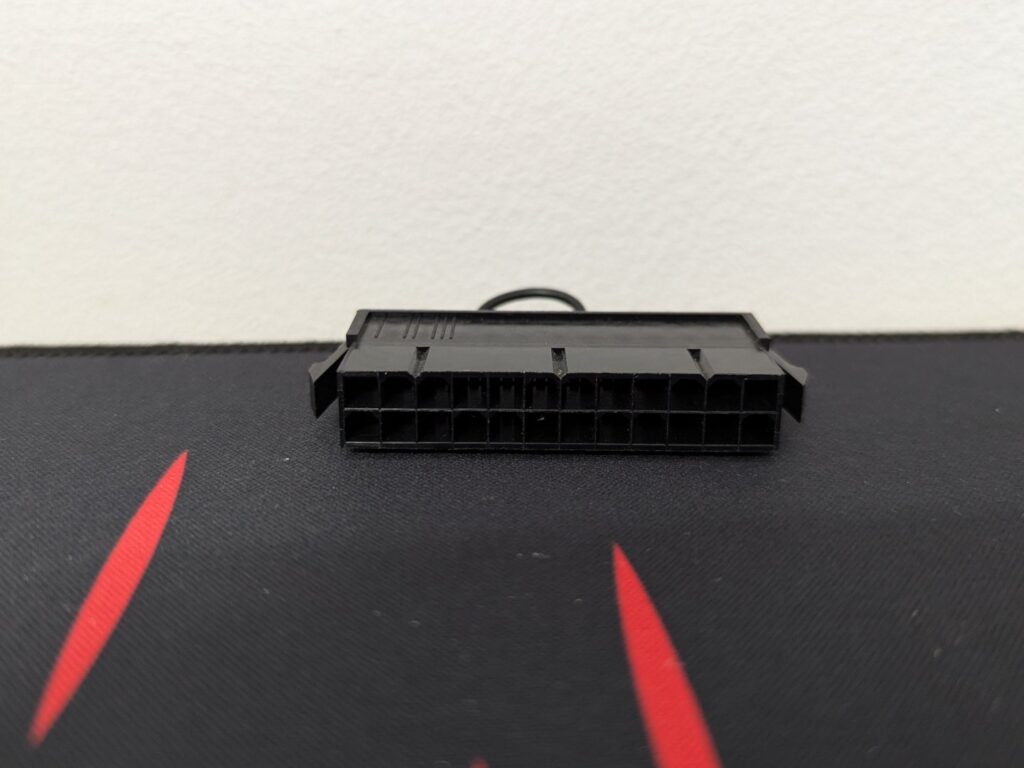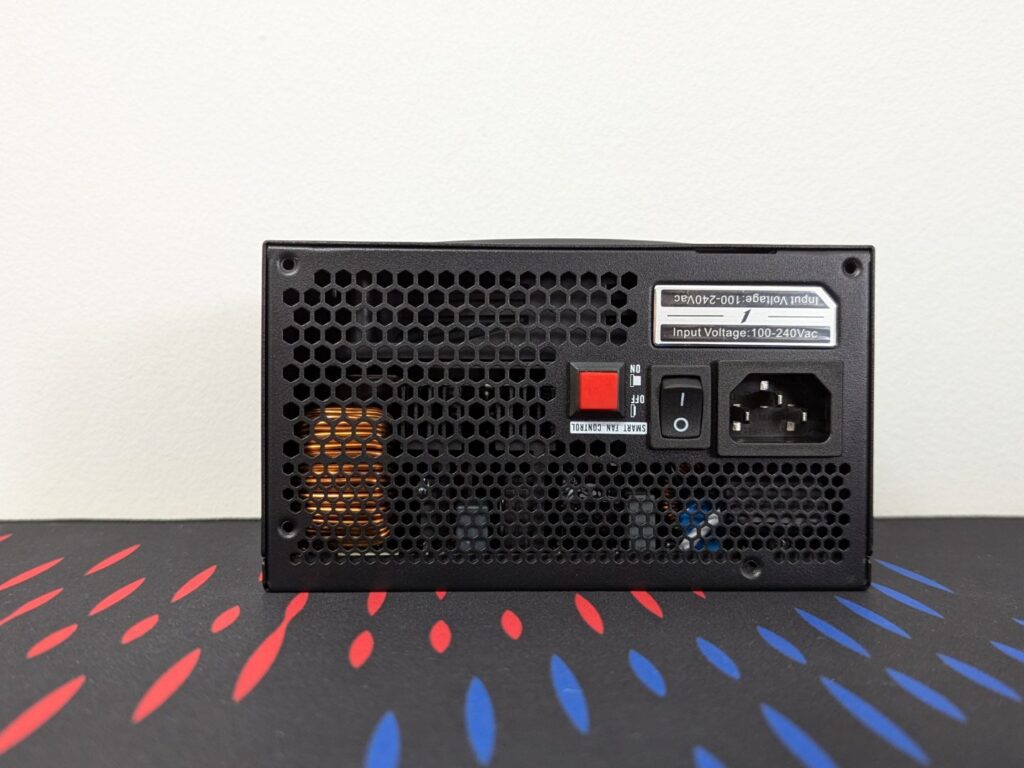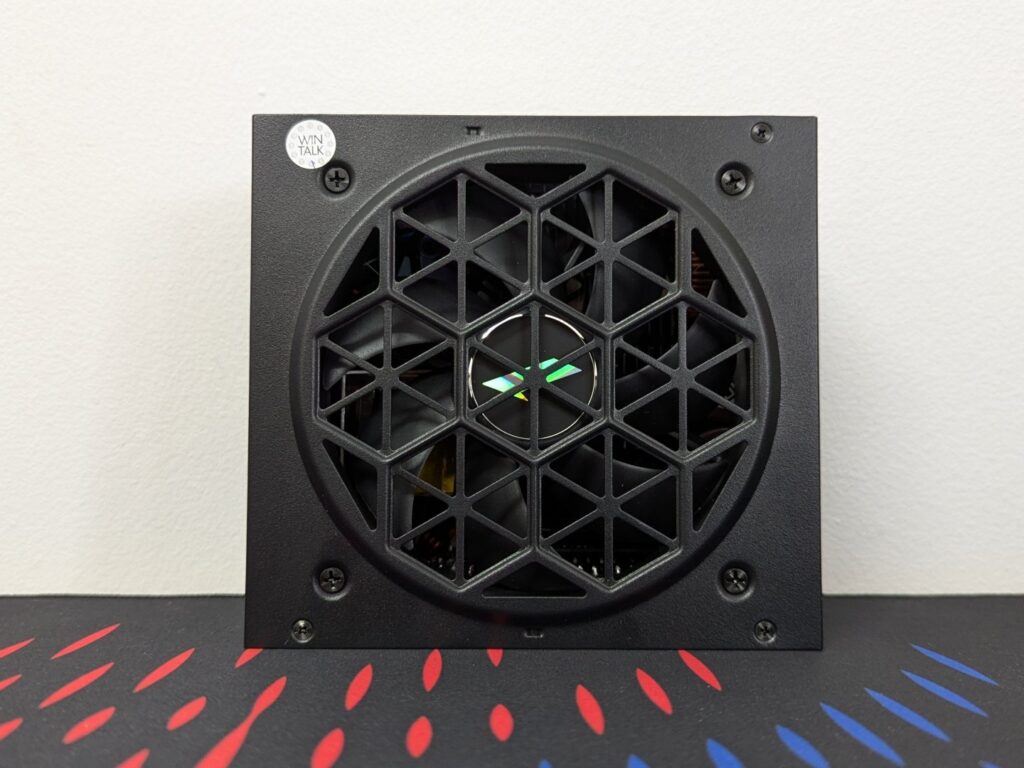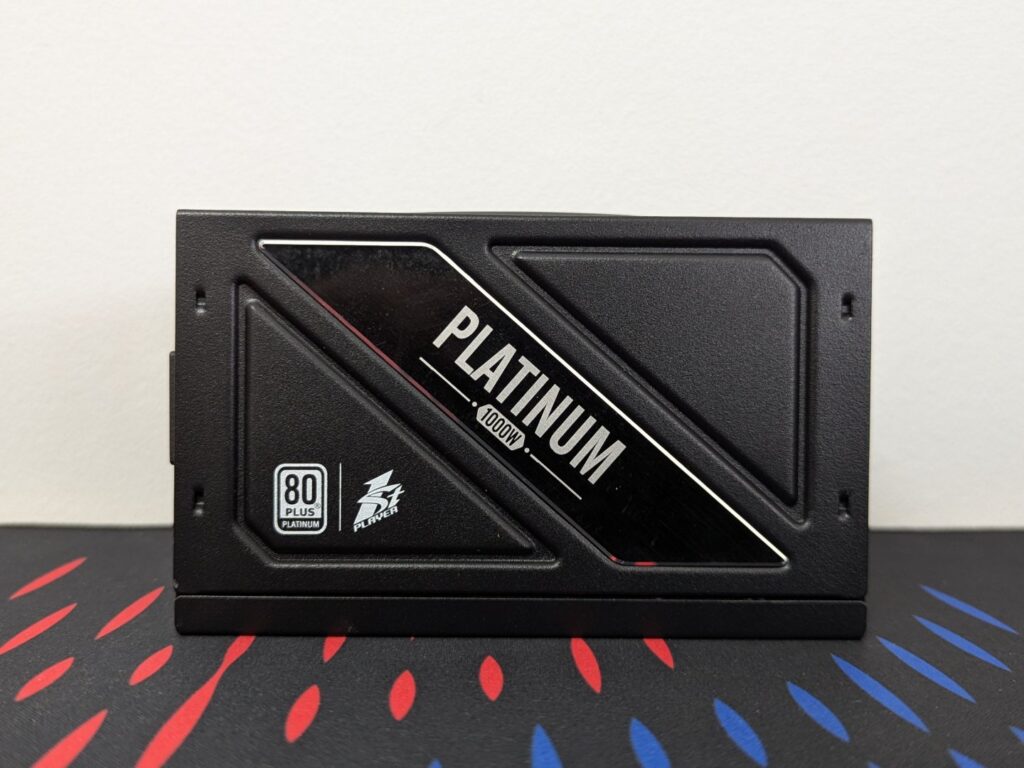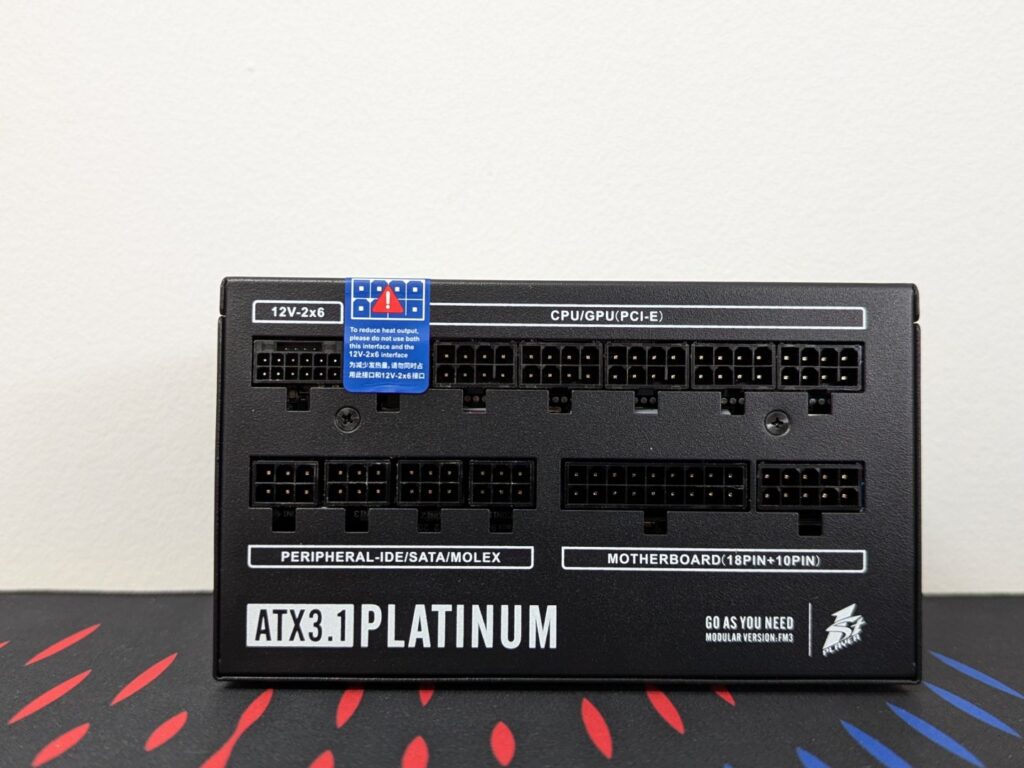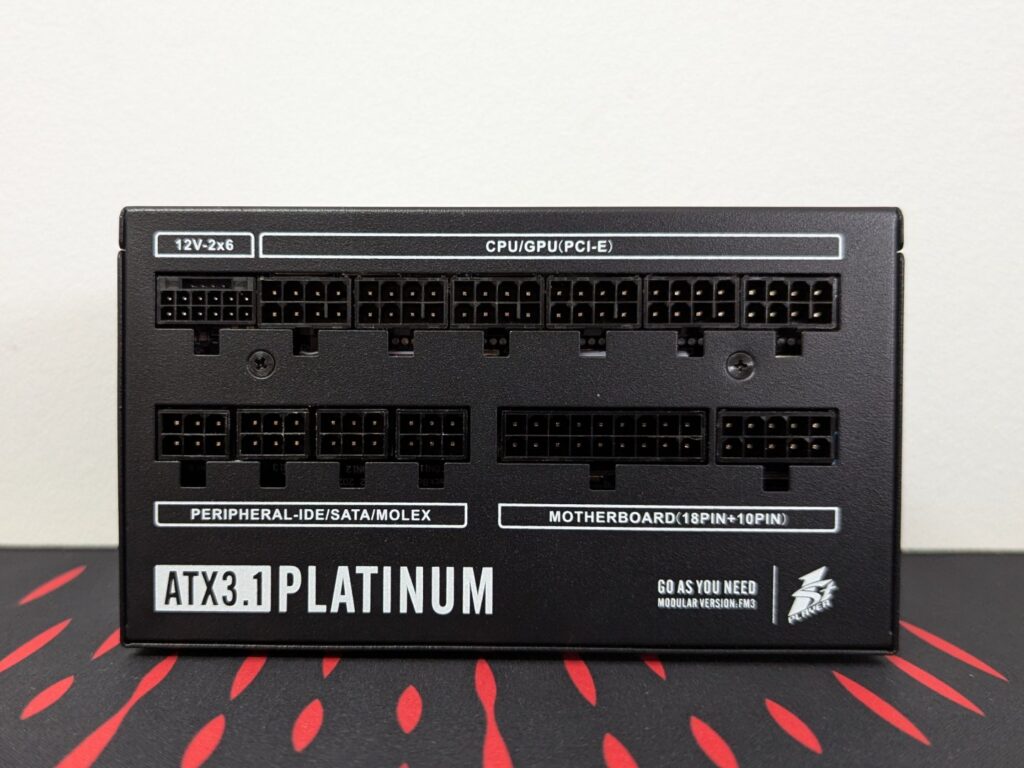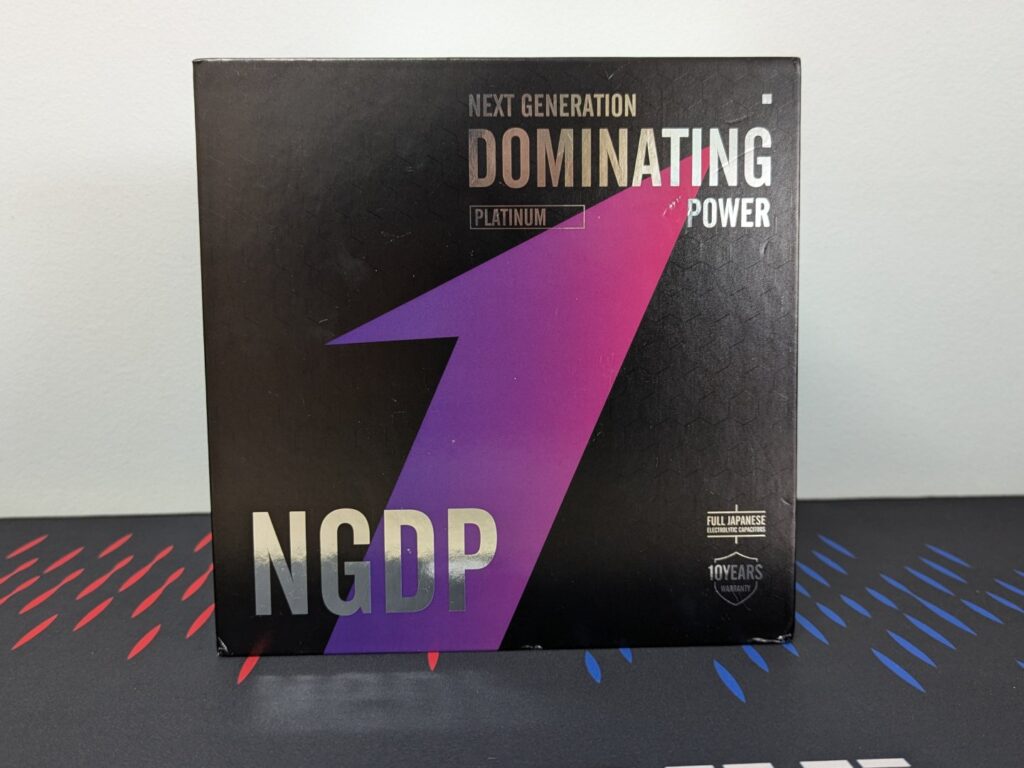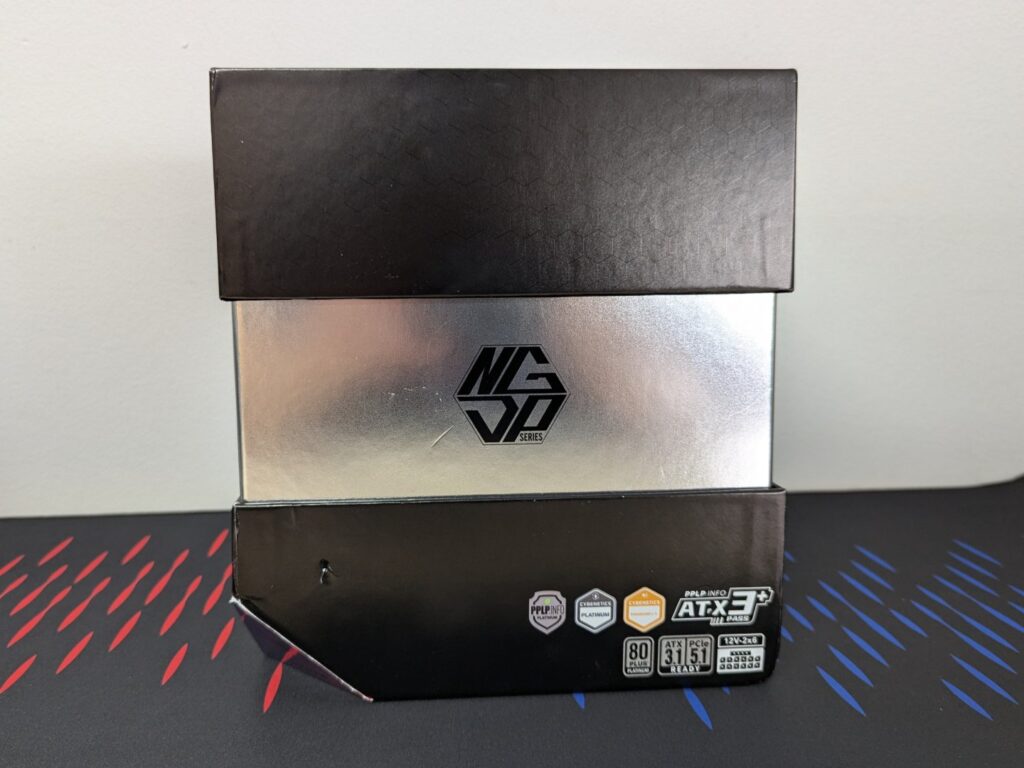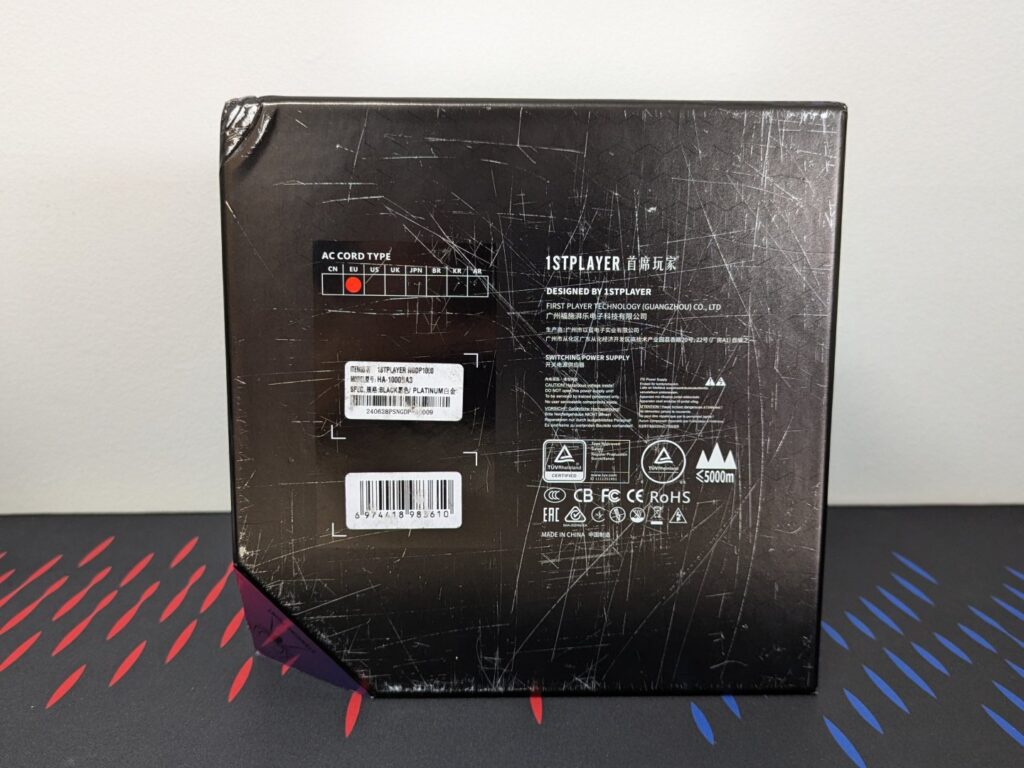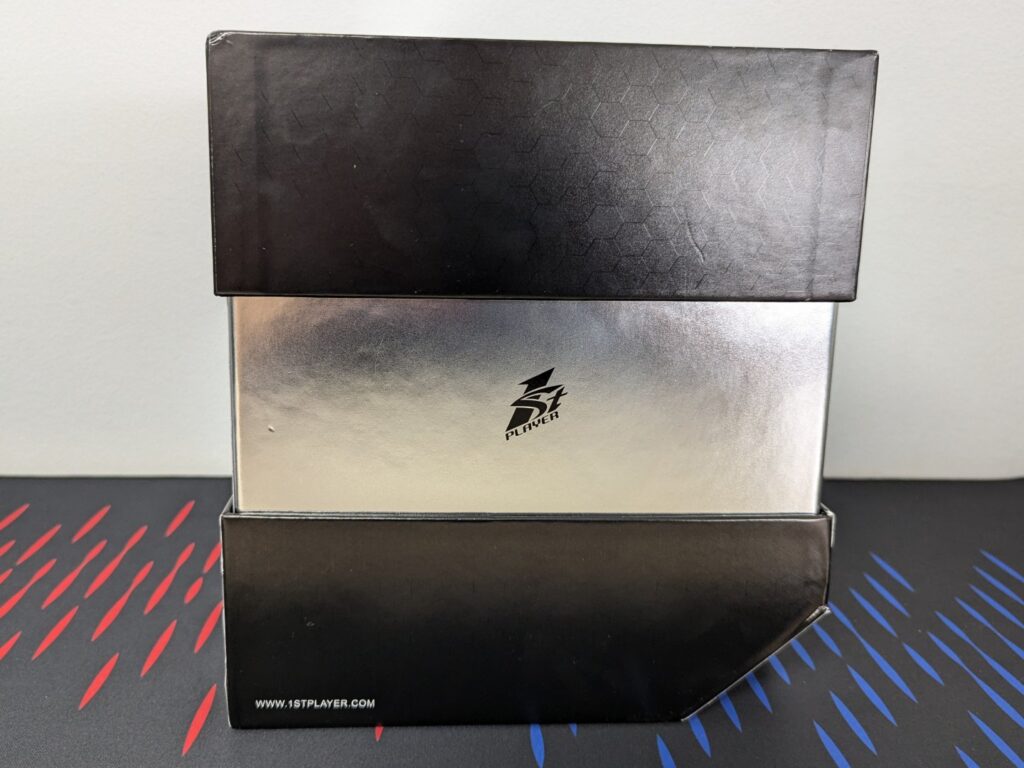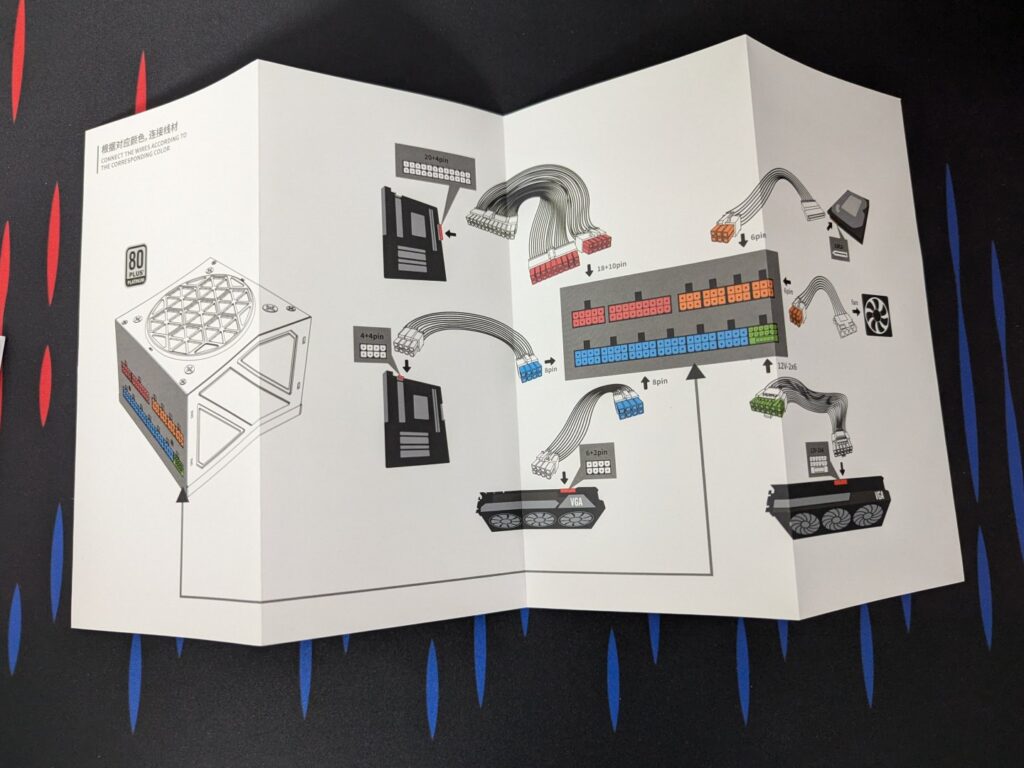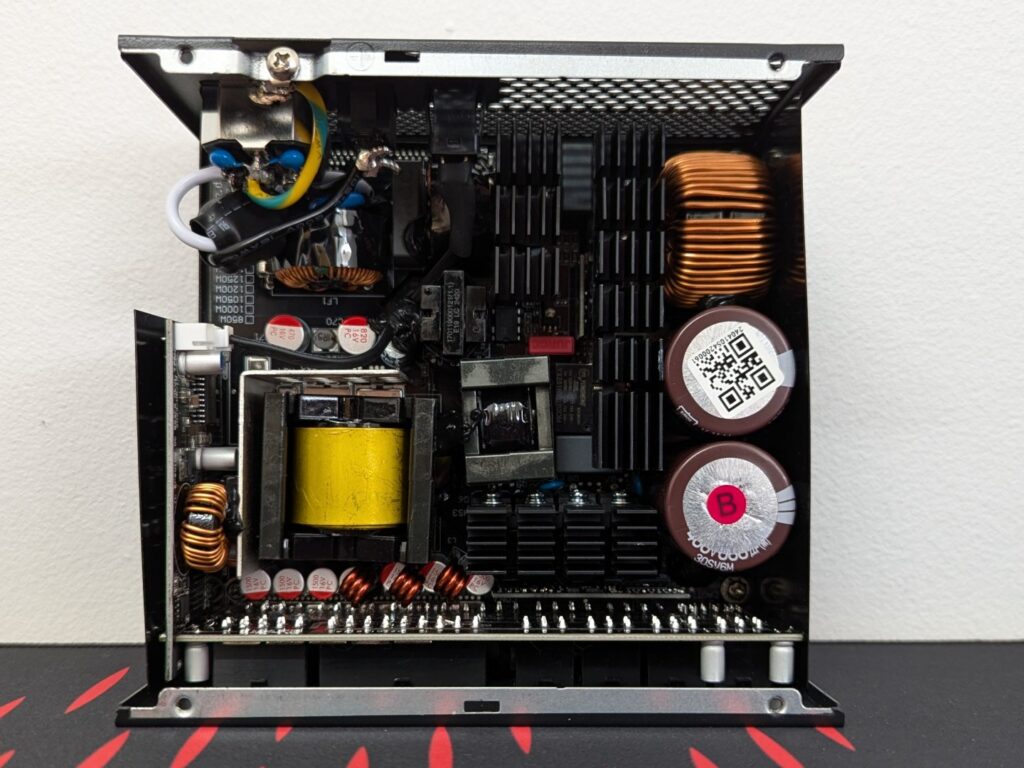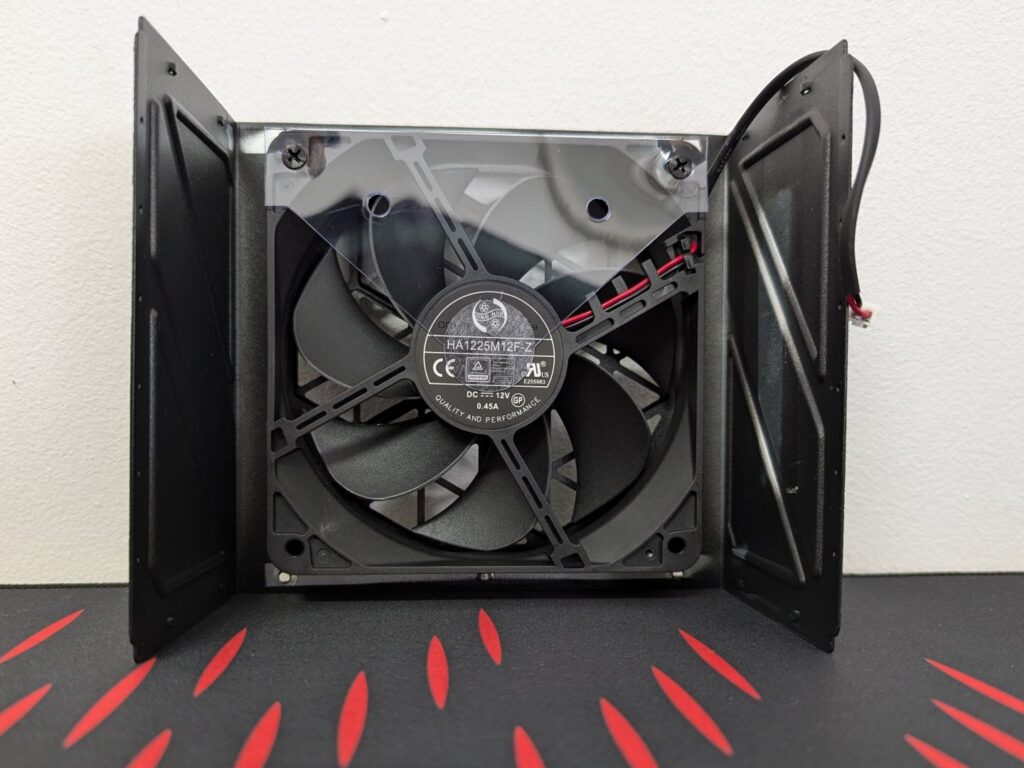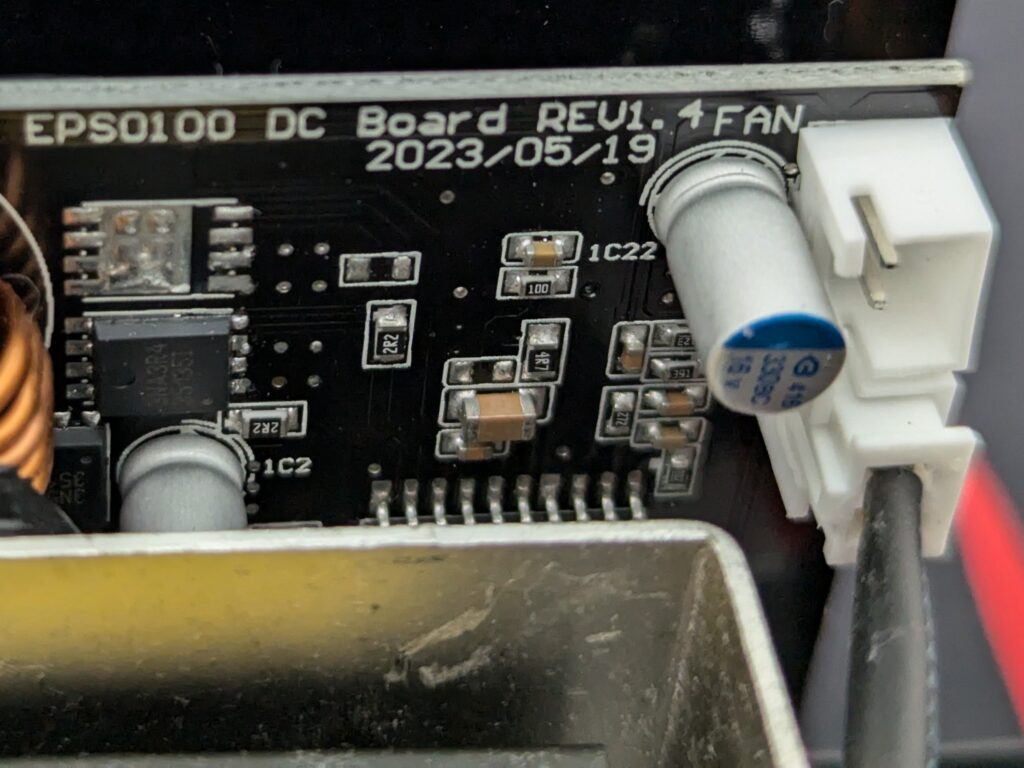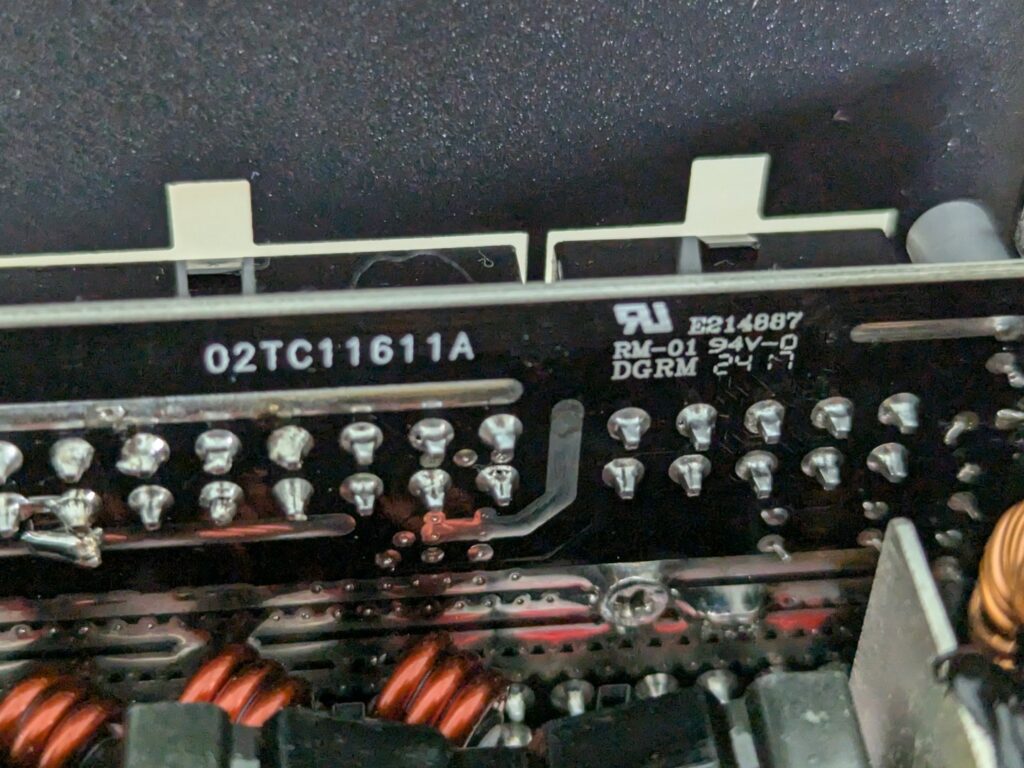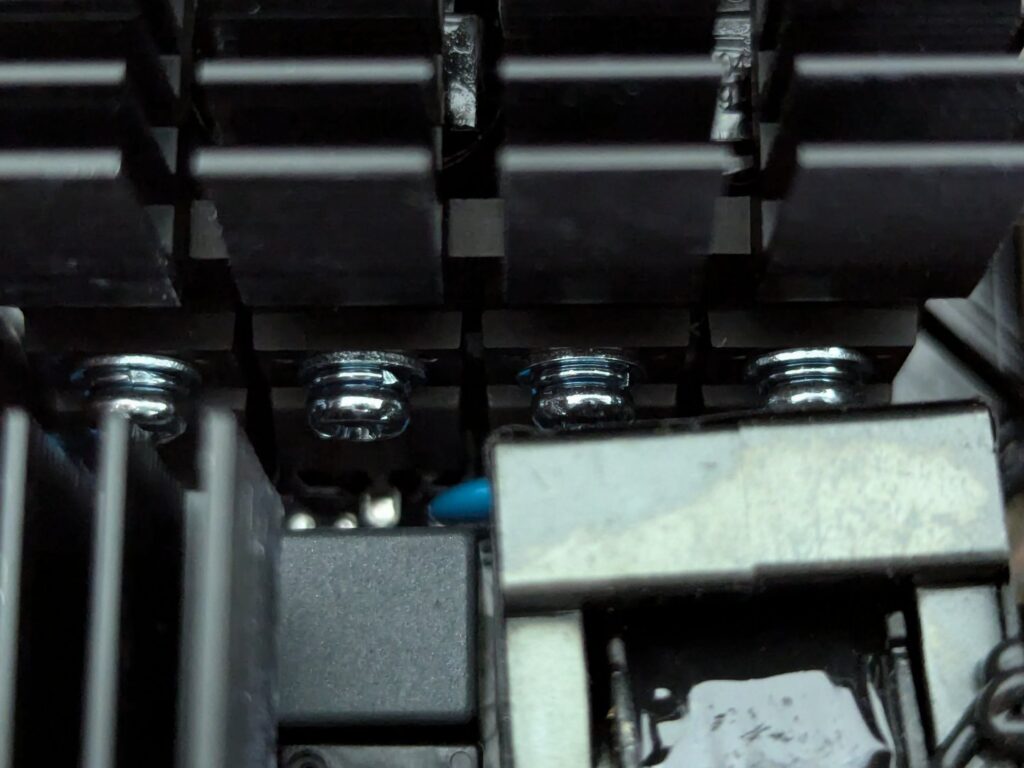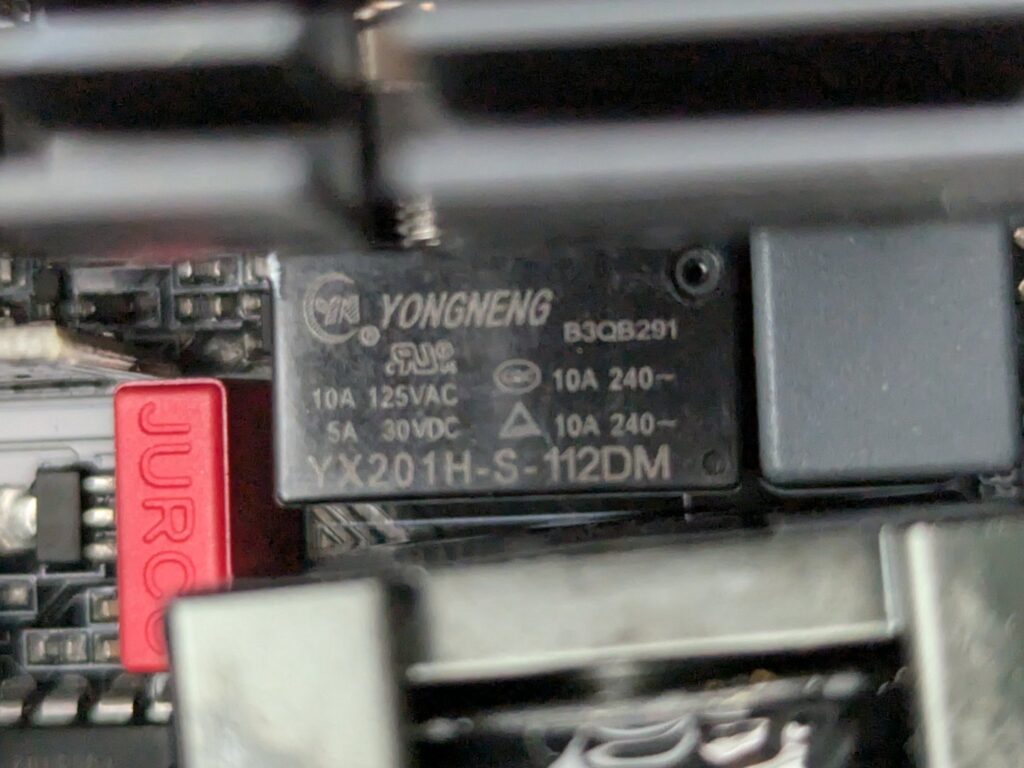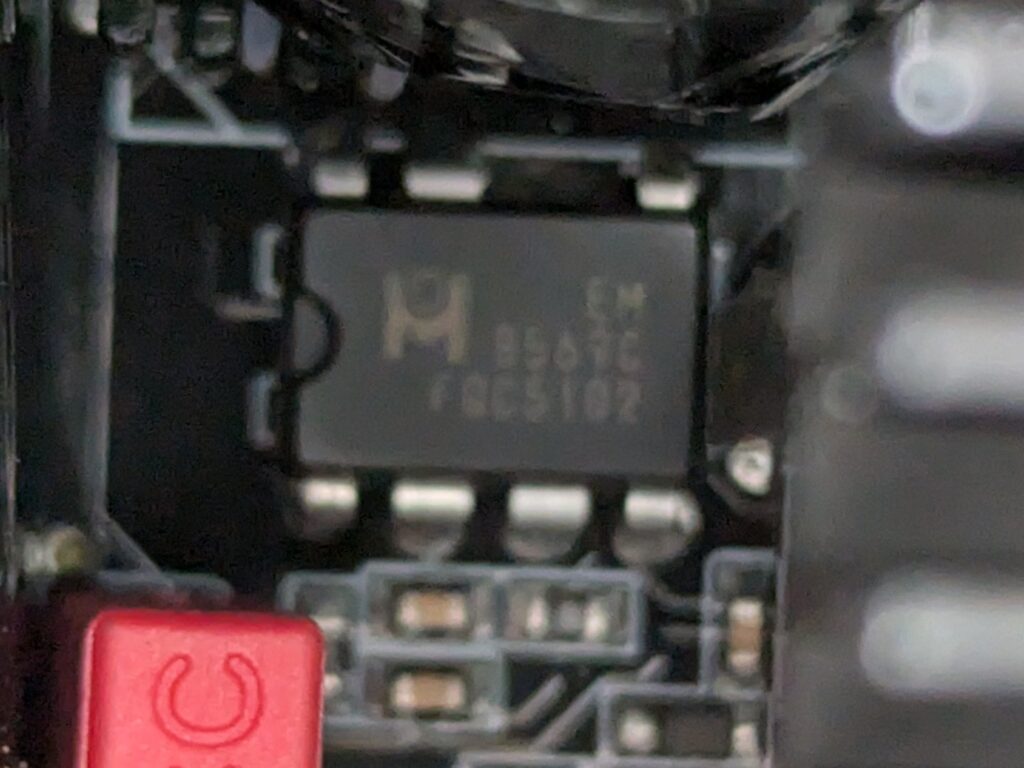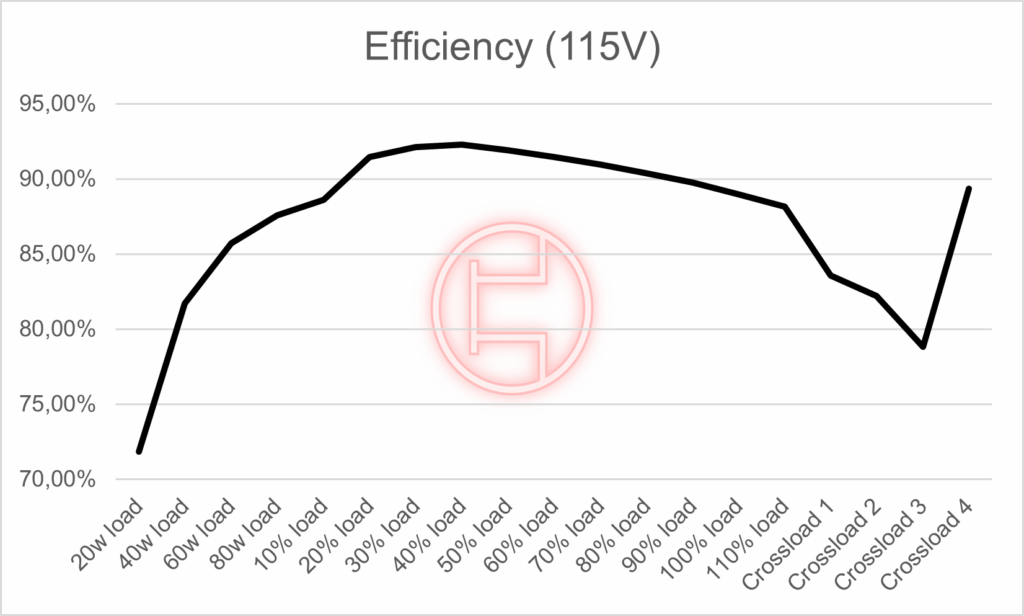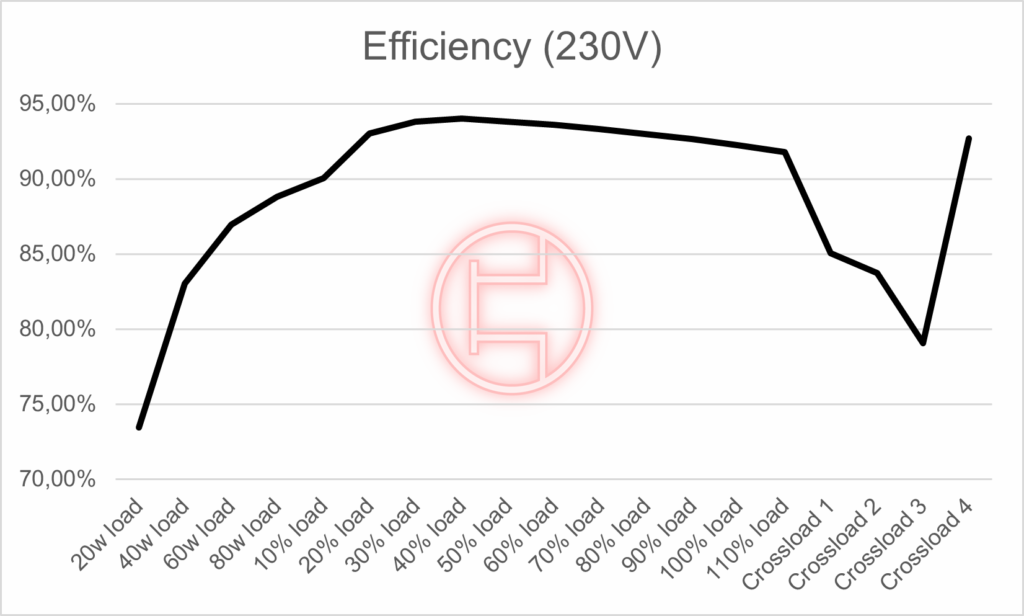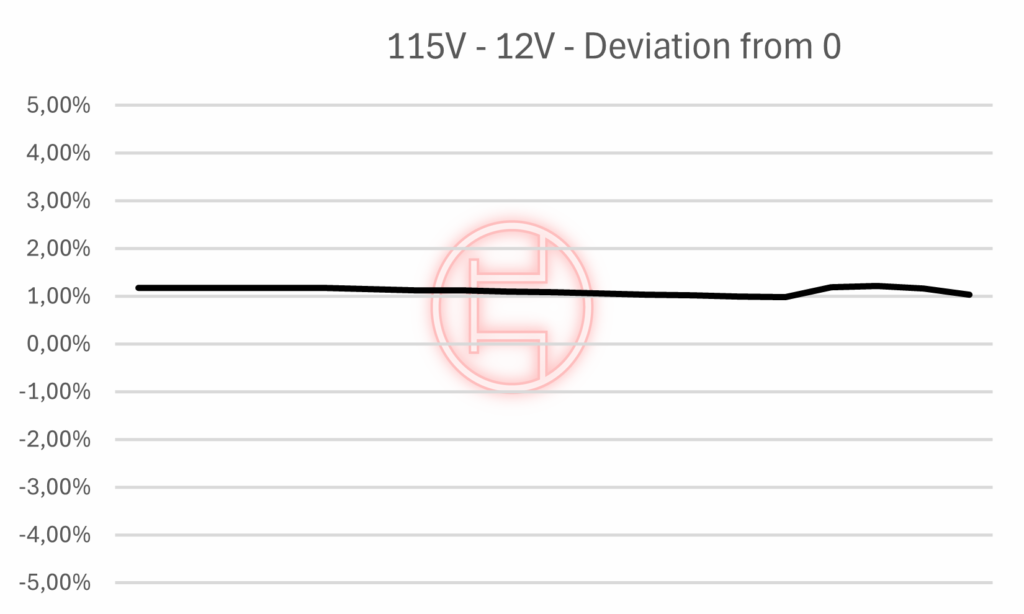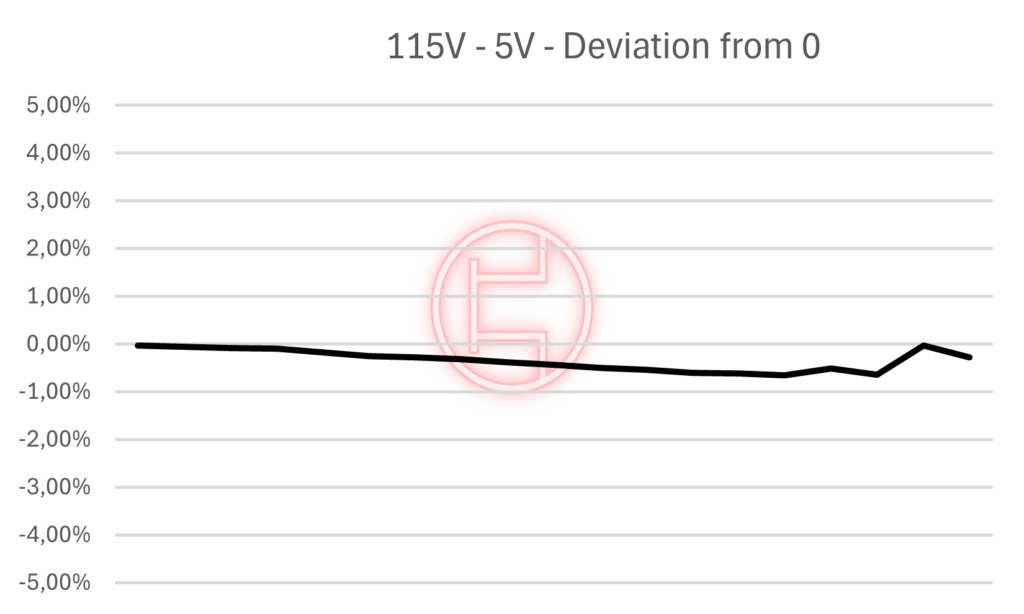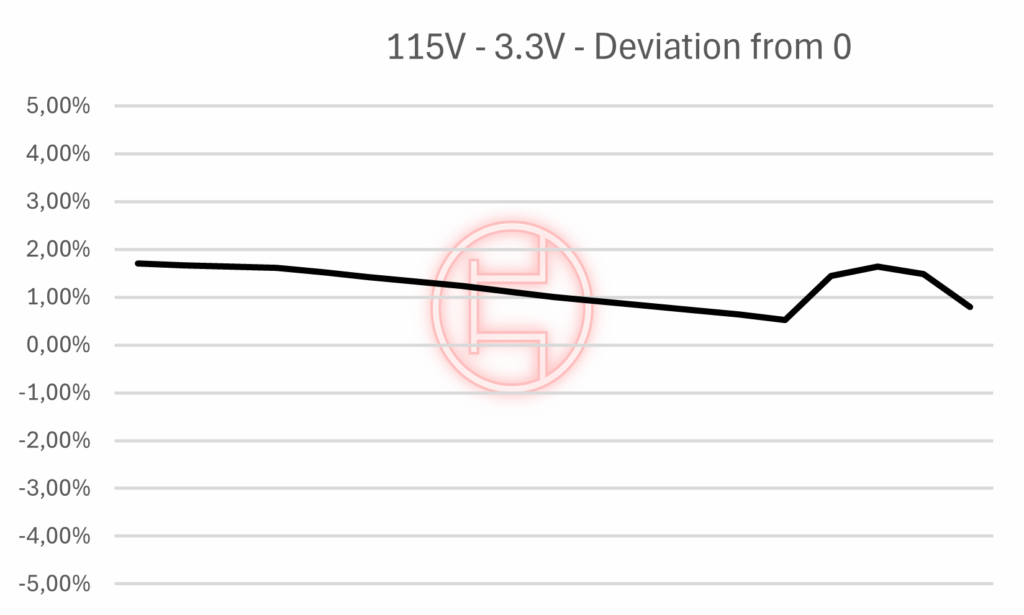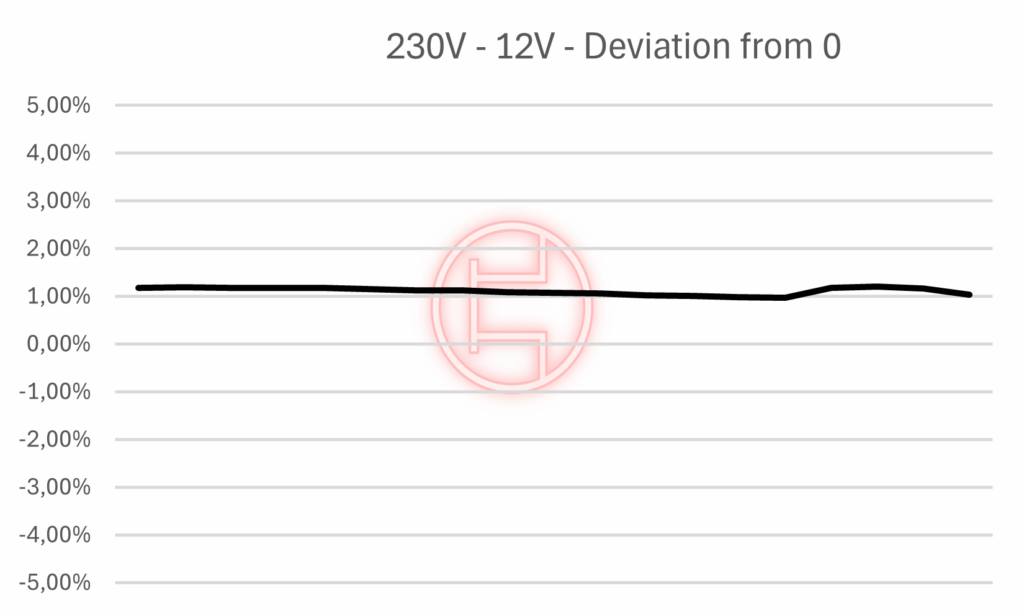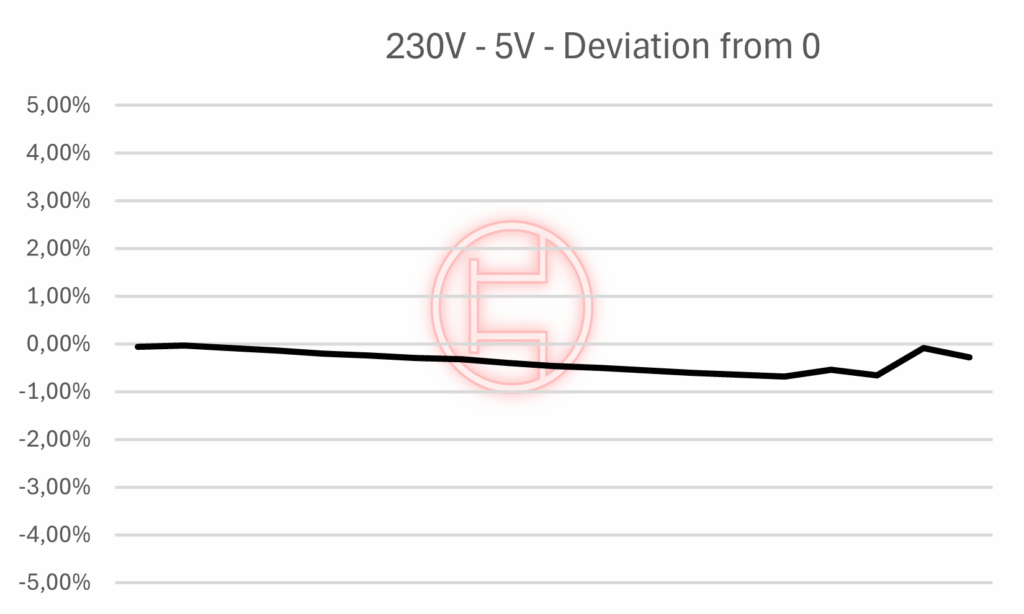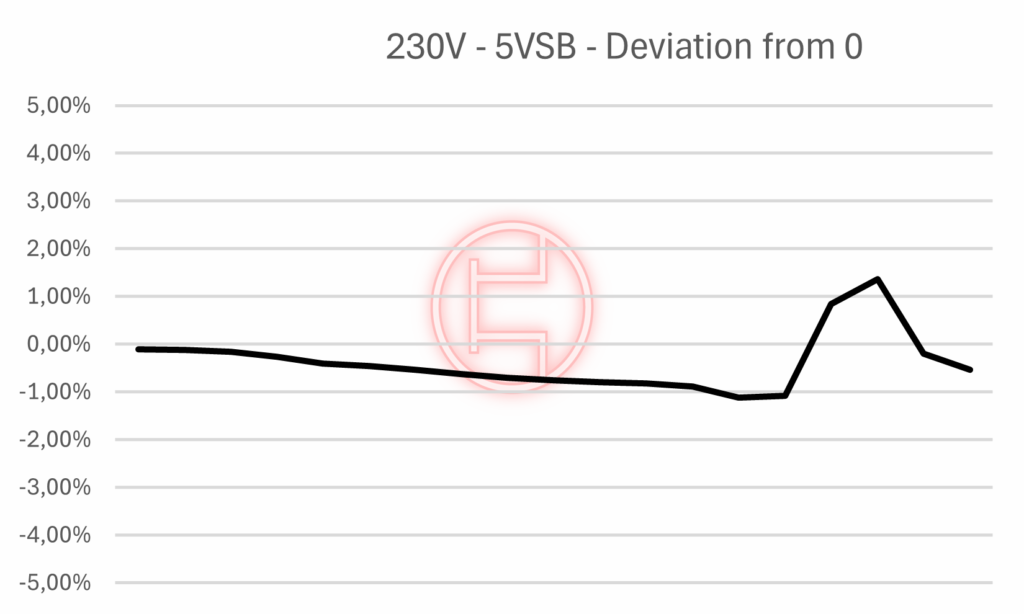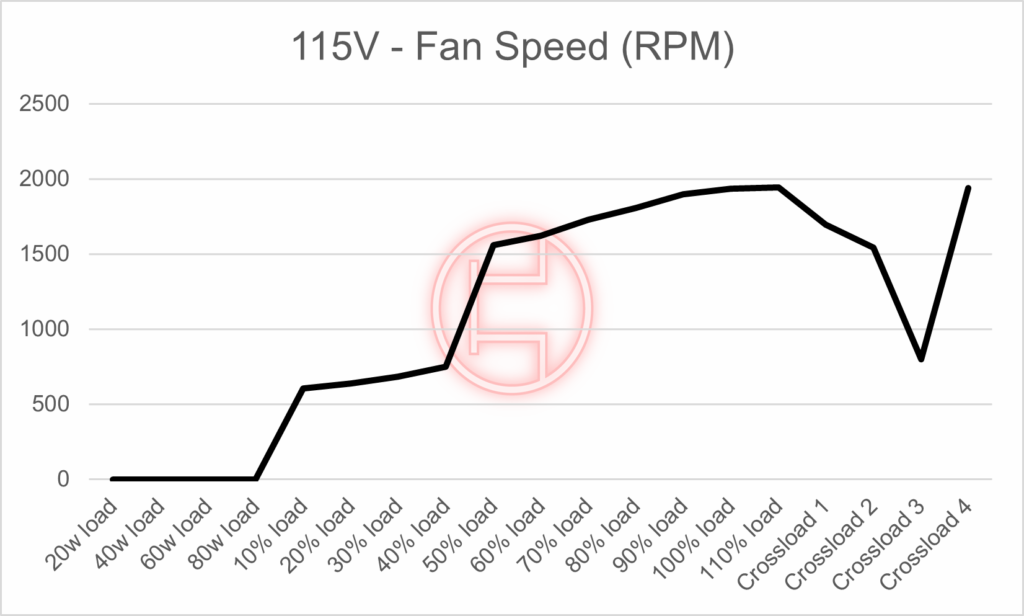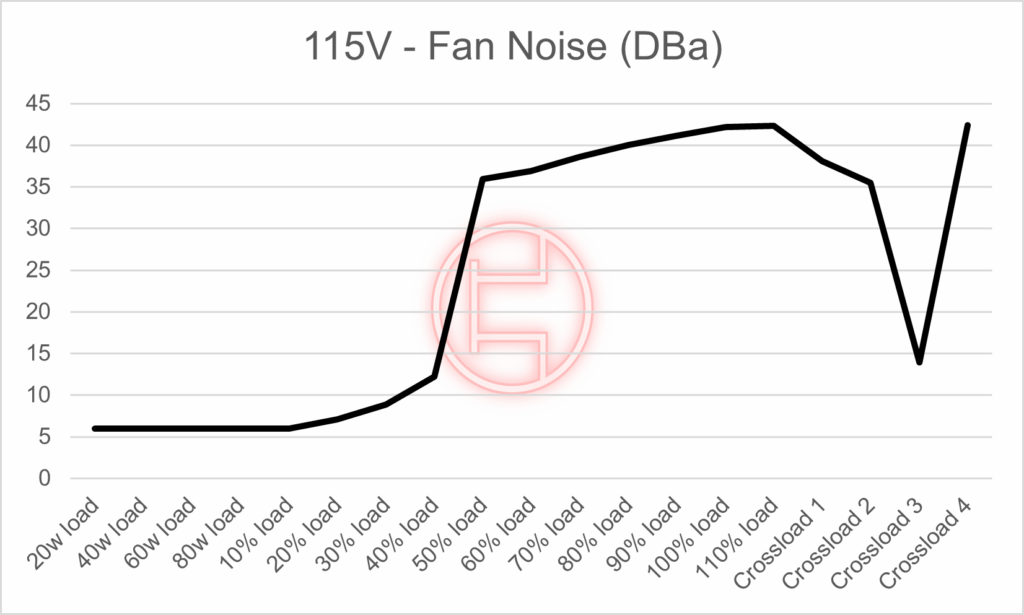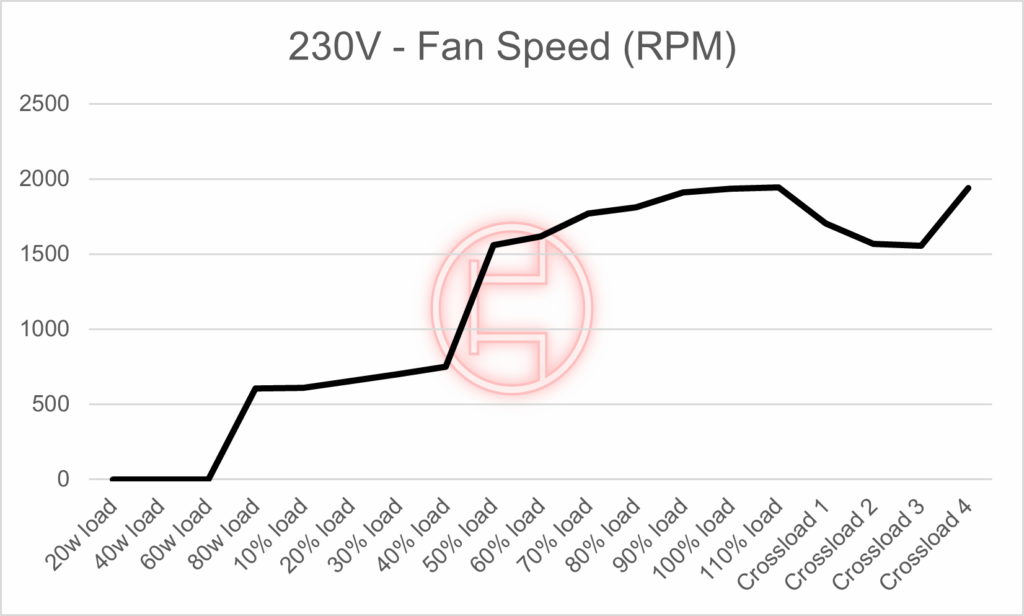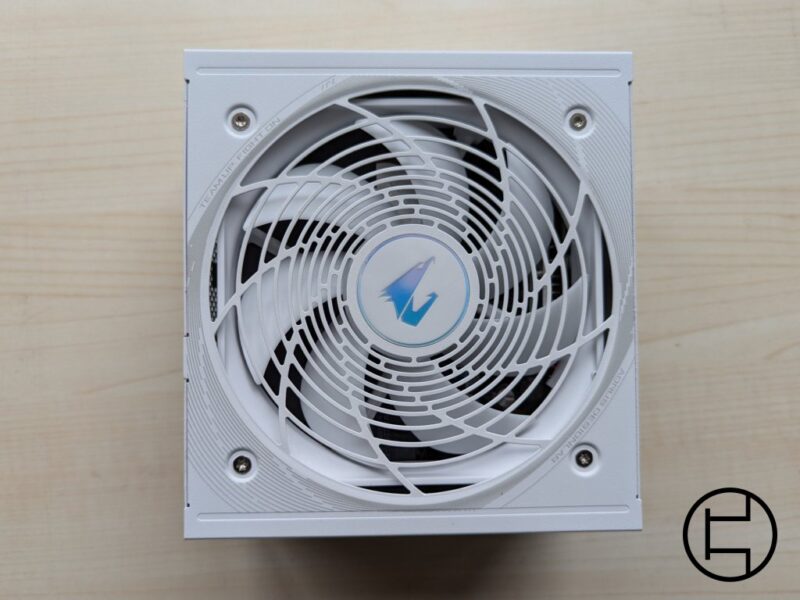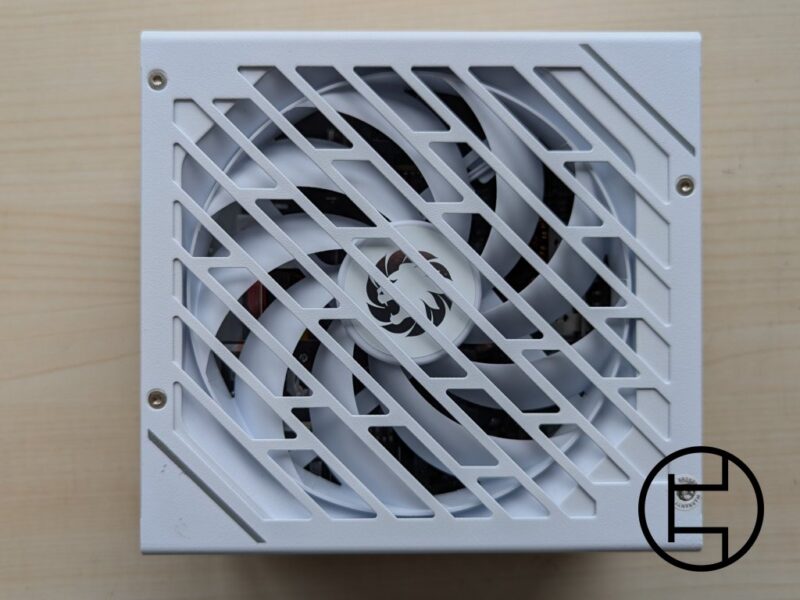Introduction
It’s been a while huh… Well, let’s start with one Hell(y) of a review
Okay, enough with the puns… For now anyways. Let’s get serious for a moment and start with who 1STPLAYER is
1STPLAYER is the retail brand of Guangzhou Helly Technology, a China based power supply manufacturer founded in 2008. They started out making LED PSUs, but eventually found their way into ATX PSUs, with the first widespread show coming from their Steampunk gold series in 2022.
Today, Helly supplies their own 1STPLAYER brand, as well as the likes of Seasonic (B12/G12), Lian LI (SP), Phanteks (AMP GH Platinum), Antec (NE-G), Redragon (RGPS) and Galax (GH).
The NGDP name is short for Next Generation Dominating Power, a bold name that… doesn’t really mean much of anything. I found it hard to remember while typing out this review, but I can’t say that’s the first time anyways.
With all that said, Helly hasn’t been without issues, best shown with the Lian Li SP850. This SFX PSU showed a massive oversight in its design, where an X-capacitor was pressed right against the bridge rectifier. As the bridge rectifier gets hot, the X-capacitor starts to melt. To make a long story short, this is a fire hazard. To this day it’s unknown how many units this affected, but it’s definitely worth a mention. If you want to read more about this, I suggest reading through Aris’ review on HWBusters.
But hey, everyone deserves a second chance! So, let’s get into this!
General Specifications
| Brand | 1STPLAYER |
| Model | NGDP Platinum |
| Wattage | 1000W |
| Introduction year | 2023 |
| Modularity | Full |
| Warranty | 10 years |
Power Specifications
| 3.3V | 5V | 12V | 5VSB | -12V |
|---|---|---|---|---|
| 20A | 20A | 83A | 3A | 0.3A |
Cables
| Cable type | Cable Quantity | Connector Per Cable | Gauge |
|---|---|---|---|
| ATX 24 pin | 1 | 1 | 16-22AWG |
| EPS 4+4 pin | 2 | 1 | 16AWG |
| PCIe Power 6+2 pin | 4 | 1 | 16AWG |
| PCIe 12VHPWR 12+4 pin | 1 | 1 | 16-24AWG |
| SATA Power | 3 | 4 | 18AWG |
| Peripheral 4 pin | 1 | 4 | 18AWG |
Whoever made the choices on cables… Massive props. Genuinely. I have nothing to complain here at all, which is… something new to say the least. 1STPLAYER includes dual EPS, allowing the NGDP to work with both mainstream and HEDT/server grade CPUs, an insane four individual PCIe power connectors (whoever did this, you’re awesome), a 12V-2×6 12VHPWR 600w cable for the RTX 4000 series, 3×4 SATA power cables and a 4x peripheral power cable.
If I were to get really nitpicky, I would’ve probably chosen to include a cable with just one peripheral power connector to power something like a pump, but that’s massively stretching it.
1STPLAYER went with 16AWG wires for everything but the SATA, peripheral and sense wires here, which are low power anyways. This does make them a bit more stiff compared to 18AWG wires, but allows more amperage (and because of that power) through the cables. This does however only make sense if the unit uses HCS (High Current System) terminals, but this is something I can’t verify here.
The NGDP’s cables themselves are embossed, giving them a stylish sleeved look. Worth noting however, it’s not as flexible as paracord cables, despite the similar look. While that makes me sound negative about it, I absolutely prefer this over your regular rubbery cables that normally come with a PSU of this class. It’s a great touch, you just shouldn’t get the wrong idea of it
A small but awesome final touch is the inclusion of cable combs with the NGDP. They’re simple plastic combs, but it’s absolutely something that should be standard for units with embossed or sleeved cables.
External
Let’s start with the box. As you’ve seen on the featured image, the box can tilt on the side, though it’s… a bit wobbly. It can be done with both the PSU still in the box and when it’s out, but one wrong touch can make it fall back down. It’s really not a big deal by any means, just something I’ve noticed while trying to set that shot up
Fortunately, the PSU and everything is well protected inside the box. When taking the top off, it first reveals some paperwork, including a manual, a quick start guide, some details on 1STPLAYER’s warranty on the NGDP with some of its marketing on the other side and a MES ID.
The MES ID is actually an awesome touch that I’ve only seen with 1STPLAYER so far. The QR code on step 2 leads you to 1STPLAYER’s site, where you can enter the identifier on step 1 to get a short Chroma report of your unit. It’s a simple 1 minute test, so nothing too special, but it’s a really nice touch regardless.
If you’re curious to an example, you can find ours here.
Anyways, let’s move on to the PSU itself, starting with the back, where we find… Hexagons! Yes, my hexagon obsession has definitely stuck with me. There’s a fancy looking sticker showing the input voltage range, the expected power plug and even better, a semi-passive (or as 1STPLAYER calls it “smart fan control”) switch, allowing you to switch between a semi-passive and always spinning mode
Moving to the front, we find a solid amount of connectors and an… interesting warning. 1STPLAYER warns you to not use the left most PCIe/EPS connector due to the high heat output. This most likely means the daughterboard for the modular connectors isn’t actually built on sustaining full power, which sadly has been rather common with ATX 3.0 PSUs. All things considered not a huge deal given that most people won’t need dual EPS, quad PCIe and a 12V-2×6 12VHPWR connector all at once, but it’s definitely the first time seeing a warning for it.
Small final note: to whoever thought of noting the pinout version, you’re also awesome. If you’re the cable guy, you’re double awesome.
On top we find a grill with large triangle shaped cutouts, showing a silver 1STPLAYER logo on the fan below
On the sides of the NGDP we see more silver accents, showing the name, another 1stplayer logo and an 80+ Platinum logo. The black and silver makes it look fancy, but also a little over the top. It’s a design you either love, hate, or don’t even notice behind your case’s shroud.
Protections
| AC OCP | CM6901T6 |
| AC UVP | CM6901T6 |
| DC OCP | APW7159C, WT7527 |
| DC OVP | APW7159C, WT7527 |
| DC UVP | APW7159C, WT7527 |
| OTP | APW7159C |
| SCP | APW7159C, WT7527 |
| MOV | Yes |
Note: the APFC controller has been excluded here, as I’ve been unable to identify it. It most likely also handles part of the NGDP’s protection set.
Parts Breakdown+Internal
| OEM | Helly Technology |
| Platform | EPS0100 REV 2.0 |
| Input Voltage | 100-240VAC |
| Primary Converter | APFC Full Bridge LLC |
| Rectifier | Synchronous Rectification |
| Regulator | DC-DC |
| Fan | HongHua HA1225M12F-Z (12V, 0.45A) |
| Bearing | Fluid Dynamic Bearing (FDB) |
| PCB Type | Double sided |
| Bulk Capacitor(s) | Nippon Chemi-con KMW (400V, 680uF, 105C) |
| Bridge Rectifiers | 2x GeneSiC GBU15J (600V, 15A @ 100°C) |
| APFC MOSFETs | 3x Oriental Semiconductor OSG60R180FF (600V, 12.5A @ 100°C)* |
| APFC Boost Diode | Global Power Technology G3S06510A* |
| APFC Controller | Unknown |
| LLC Resonant Controller | Champion CM6901T6X |
| Main Switches | 4x Oriental Semiconductor OSG55R190FF (550V, 12.5A @ 100°C) |
| 12v MOSFETs | 8x Allpower AG013N04G-AU* |
| DC-DC Converters | 2x XSEMI XP3NA3R4MT, 3x Rectron RMN3N5R0DF |
| DC-DC Controller | Anpec APW7159C |
| Supervisor IC | Weltrend WT7527 |
| Standby PWM Controller | Excelliance MOS EM8569C |
* = based off Cybenetics report, not verified by Cultists
As mentioned earlier, 1STPLAYER is the retail brand of Helly, so seeing them as the OEM here isn’t a surprise, though also shouldn’t be a given. The best example of this is actually one of Helly’s clients, Seasonic. They have the capacity to make their own units, but often outsource their lower end lineups. This isn’t something exclusive to Seasonic, as companies like Superflower and Cougar (HEC) have also shown to do it for some of their lower end (and in the case of Cougar actually their higher end) PSUs
The EPS-0100 platform is also used on three other units, being the Galax HoF GH series, Phanteks AMP GH and Max Elite Maxwell Duke. This is the second revision of the platform, where I’ve found two changes based off Aris’ review of the first revision on Hwbusters. The first is a really minor difference in the bulk caps, where rev. 1 seems to use Nippon Chemi-con’s KMR series, while my unit has KMW series caps. They have the exact same voltage, capacity and temperature ratings, so it’s barely worth noting.
The difference that improves the NGDP quite dramatically is in the fan. The rev. 1 version used a Yate Loon DBB fan, which honestly felt like a dealbreaker for the unit. Yate Loon fans are known to be cheap in both senses, as they’re cheap for manufacturers to use, but also lack performance and reliability compared to the likes of HongHua and Globe Fan. If this was a cheap bronze unit, I could’ve made some sense of it, but for a close to 200 USD MSRP PSU, I expect at the very least a step up.
That step up is the HongHua HA1225M12F-Z, a fan commonly found in CWT, Seasonic, Andyson and many, many other manufacturer’s PSUs. A variation of it is also used in Corsair’s PSUs as the NR series. HongHua is commonly used, and rightfully so. They’re relatively cheap, offer great performance and reliability, and together with Globe Fan would’ve been my main picks for a unit like this. If you want to make another step up, there’s brands like Nidec, Sunon and Protechnic, but they’re honestly overkill for most consumer units, and are for that reason a lot less common.
As you might’ve noticed, there’s a few parts I’ve been unable to confirm or in the case of the APFC controller, completely unable to find. This is because of the NGDP being so compact, I couldn’t actually take the PCB out of the housing, as I’d risk breaking something on the AC daughterboard. For this reason I’m “assuming” the parts I can’t directly verify are the same as the rev. 1
This also means I can’t directly confirm the soldering on most of the unit, but looking at Aris’ review on HWBusters, I highly doubt to have found anything either way. Helly really seems to have stepped up their game from the last time I’ve seen them around.
As far as any of the other parts go, I’d really have to start nitpicking on things to find anything interesting. 1STPLAYER made a lot of excellent choices here, where I can honestly only make one change. If I were the one designing a unit like this, I wouldn’t have minded to step down to something like Elite or Teapo capacitors instead of the mix of Nippon Chemi-con and Rubycon capacitors that 1STPLAYER went with. It’s nothing to do with quality, just a bit of a cost saving that won’t really have an impact as with the right implementation, both can do just as well as “Japanese” capacitors (which these days are mostly produced in China and Taiwan anyways)
Overall, Helly made a way better unit than I expected here, made a ton of sensible choices and even listened to the feedback of reviewers by swapping the fan. My only real complaint here is that you’d have to receive the rev 2 version of this unit for it to actually be this good, something you can’t actually see without opening up your PSU (and with that obviously voiding your warranty as PSUs aren’t user serviceable)
Electrical Performance
The following results are by third party PSU lab Cybenetics. The results shown are based off the 1STPLAYER NGDP ATX 3.1 Platinum report published on 29-08-2023.
Note: These results are based on the REV 1.0 unit, there are some part differences in the REV 2.0 unit shown in the review.
Test Equipment
| Electronic Loads | Chroma 63601-5 x2 |
| Chroma 63600-2 | |
| Chroma 63640-80-80 x10 | |
| Chroma 63610-80-20 | |
| AC Sources | Chroma 6530 |
| APM SP300VAC4000W-P | |
| Power Analyzers | RS HMC8015 |
| N4L PPA1530 | |
| N4L PPA5530 | |
| Oscilloscopes | Picoscope 4444 |
| Rigol DS7014 | |
| Siglent SDS2104X PLUS | |
| Sound Analyzer | Bruel & Kjaer 2270 G4 |
| Microphone | Bruel & Kjaer Type 4955-A |
| Temperature Logger | Picoscope TC-08 |
| Tachometer | UNI-T UT372 |
| Multimeters | Keysight 34465A |
| Keithley 2015 - THD | |
| UPS | FSP Champ Tower 3kVA |
| CyberPower OLS3000E 3kVA | |
| Isolation Transformer | 4kVA |
Overall (115v)
| Average efficiency | 90,361% |
| Efficiency at 2% load | 71,907 |
| Average efficiency 5VSB | 80,937% |
| Standby power consumption (W) | 0,0788 |
| Average PF | 0,992 |
| Average noise output | 30,73 dB(A) |
| Efficiency rating (ETA) | Platinum |
| Noise rating (LAMBDA) | Standard++ |
Overall (230v)
| Average efficiency | 92,448% |
| Average efficiency 5VSB | 80,266% |
| Standby power consumption (W) | 0,1217 |
| Average PF | 0,972 |
| Average noise output | 29,78 dB(A) |
| Efficiency rating (ETA) | Platinum |
| Noise rating (LAMBDA) | A- |
Efficiency (115v)
| Load (115v) | Efficiency | AC (Watts) | DC (Watts) |
|---|---|---|---|
| 20w load | 71,857% | 27,84 | 20,005 |
| 40w load | 81,717% | 48,958 | 40,007 |
| 60w load | 85,702% | 70,017 | 60,006 |
| 80w load | 87,595% | 91,289 | 79,965 |
| 10% load | 88,609% | 112,872 | 100,015 |
| 20% load | 91,464% | 218,635 | 199,973 |
| 30% load | 92,134% | 325,652 | 300,037 |
| 40% load | 92,277% | 433,121 | 399,673 |
| 50% load | 91,899% | 543,409 | 499,385 |
| 60% load | 91,468% | 655,801 | 599,847 |
| 70% load | 90,967% | 769,112 | 699,635 |
| 80% load | 90,398% | 884,579 | 799,639 |
| 90% load | 89,772% | 1001,908 | 899,437 |
| 100% load | 88,982% | 1123,204 | 999,451 |
| 110% load | 88,161% | 1247,793 | 1100,064 |
| Crossload 1 | 83,573% | 145,154 | 121,309 |
| Crossload 2 | 82,209% | 123,368 | 101,419 |
| Crossload 3 | 78,824% | 85,484 | 67,382 |
| Crossload 4 | 89,364% | 1119,231 | 1000,191 |
Efficiency (230v)
| Load (230v) | Efficiency | AC (Watts) | DC (Watts) |
|---|---|---|---|
| 20w load | 73,426% | 27,248 | 20,007 |
| 40w load | 83,031% | 48,183 | 40,007 |
| 60w load | 86,936% | 69,027 | 60,009 |
| 80w load | 88,825% | 90,033 | 79,972 |
| 10% load | 90,057% | 111,069 | 100,025 |
| 20% load | 93,008% | 215,025 | 199,99 |
| 30% load | 93,809% | 319,858 | 300,055 |
| 40% load | 94,016% | 425,199 | 399,757 |
| 50% load | 93,809% | 532,423 | 499,459 |
| 60% load | 93,596% | 640,964 | 599,914 |
| 70% load | 93,290% | 750,055 | 699,728 |
| 80% load | 92,969% | 860,231 | 799,745 |
| 90% load | 92,632% | 971,089 | 899,536 |
| 100% load | 92,240% | 1083,647 | 999,558 |
| 110% load | 91,797% | 1198,486 | 1100,171 |
| Crossload 1 | 85,057% | 142,645 | 121,329 |
| Crossload 2 | 83,723% | 121,155 | 101,435 |
| Crossload 3 | 79,069% | 85,233 | 67,393 |
| Crossload 4 | 92,691% | 1079,165 | 1000,287 |
Voltage Regulation (115v)
| Load (115v) | 12V (voltage) | Deviation from 0 | 5V (voltage) | Deviation from 0 | 3.3V (voltage) | Deviation from 0 | 5VSB (voltage) | Deviation from 0 |
|---|---|---|---|---|---|---|---|---|
| 20w load | 12,142 | 1,18% | 4,998 | -0,04% | 3,356 | 1,70% | 4,995 | -0,10% |
| 40w load | 12,142 | 1,18% | 4,997 | -0,06% | 3,355 | 1,67% | 4,994 | -0,12% |
| 60w load | 12,142 | 1,18% | 4,996 | -0,08% | 3,354 | 1,64% | 4,991 | -0,18% |
| 80w load | 12,142 | 1,18% | 4,995 | -0,10% | 3,353 | 1,61% | 4,989 | -0,22% |
| 10% load | 12,142 | 1,18% | 4,991 | -0,18% | 3,35 | 1,52% | 4,981 | -0,38% |
| 20% load | 12,138 | 1,15% | 4,987 | -0,26% | 3,347 | 1,42% | 4,977 | -0,46% |
| 30% load | 12,136 | 1,13% | 4,986 | -0,28% | 3,344 | 1,33% | 4,973 | -0,54% |
| 40% load | 12,134 | 1,12% | 4,984 | -0,32% | 3,341 | 1,24% | 4,969 | -0,62% |
| 50% load | 12,132 | 1,10% | 4,981 | -0,38% | 3,337 | 1,12% | 4,966 | -0,68% |
| 60% load | 12,129 | 1,08% | 4,978 | -0,44% | 3,333 | 1,00% | 4,963 | -0,74% |
| 70% load | 12,127 | 1,06% | 4,975 | -0,50% | 3,33 | 0,91% | 4,96 | -0,80% |
| 80% load | 12,124 | 1,03% | 4,973 | -0,54% | 3,327 | 0,82% | 4,96 | -0,80% |
| 90% load | 12,122 | 1,02% | 4,97 | -0,60% | 3,324 | 0,73% | 4,957 | -0,86% |
| 100% load | 12,12 | 1,00% | 4,969 | -0,62% | 3,321 | 0,64% | 4,946 | -1,08% |
| 110% load | 12,118 | 0,98% | 4,967 | -0,66% | 3,317 | 0,52% | 4,947 | -1,06% |
| Crossload 1 | 12,143 | 1,19% | 4,974 | -0,52% | 3,348 | 1,45% | 5,043 | 0,86% |
| Crossload 2 | 12,146 | 1,22% | 4,968 | -0,64% | 3,354 | 1,64% | 5,069 | 1,38% |
| Crossload 3 | 12,14 | 1,17% | 4,998 | -0,04% | 3,349 | 1,48% | 4,992 | -0,16% |
| Crossload 4 | 12,125 | 1,04% | 4,986 | -0,28% | 3,326 | 0,79% | 4,974 | -0,52% |
Voltage Regulation (230v)
| Load (230v) | 12V (voltage) | Deviation from 0 | 5V (voltage) | Deviation from 0 | 3.3V (voltage) | Deviation from 0 | 5VSB (voltage) | Deviation from 0 |
|---|---|---|---|---|---|---|---|---|
| 20w load | 12,142 | 1,18% | 4,997 | -0,06% | 3,355 | 1,67% | 4,995 | -0,10% |
| 40w load | 12,143 | 1,19% | 4,998 | -0,04% | 3,355 | 1,67% | 4,994 | -0,12% |
| 60w load | 12,142 | 1,18% | 4,996 | -0,08% | 3,354 | 1,64% | 4,992 | -0,16% |
| 80w load | 12,141 | 1,18% | 4,993 | -0,14% | 3,351 | 1,55% | 4,987 | -0,26% |
| 10% load | 12,141 | 1,18% | 4,99 | -0,20% | 3,35 | 1,52% | 4,98 | -0,40% |
| 20% load | 12,138 | 1,15% | 4,988 | -0,24% | 3,347 | 1,42% | 4,977 | -0,46% |
| 30% load | 12,136 | 1,13% | 4,985 | -0,30% | 3,343 | 1,30% | 4,973 | -0,54% |
| 40% load | 12,134 | 1,12% | 4,984 | -0,32% | 3,34 | 1,21% | 4,969 | -0,62% |
| 50% load | 12,131 | 1,09% | 4,98 | -0,40% | 3,337 | 1,12% | 4,965 | -0,70% |
| 60% load | 12,128 | 1,07% | 4,977 | -0,46% | 3,333 | 1,00% | 4,962 | -0,76% |
| 70% load | 12,127 | 1,06% | 4,975 | -0,50% | 3,33 | 0,91% | 4,96 | -0,80% |
| 80% load | 12,123 | 1,02% | 4,972 | -0,56% | 3,326 | 0,79% | 4,959 | -0,82% |
| 90% load | 12,121 | 1,01% | 4,97 | -0,60% | 3,323 | 0,70% | 4,956 | -0,88% |
| 100% load | 12,118 | 0,98% | 4,968 | -0,64% | 3,32 | 0,61% | 4,944 | -1,12% |
| 110% load | 12,116 | 0,97% | 4,966 | -0,68% | 3,316 | 0,48% | 4,946 | -1,08% |
| Crossload 1 | 12,142 | 1,18% | 4,973 | -0,54% | 3,347 | 1,42% | 5,042 | 0,84% |
| Crossload 2 | 12,145 | 1,21% | 4,967 | -0,66% | 3,354 | 1,64% | 5,068 | 1,36% |
| Crossload 3 | 12,139 | 1,16% | 4,996 | -0,08% | 3,347 | 1,42% | 4,99 | -0,20% |
| Crossload 4 | 12,124 | 1,03% | 4,986 | -0,28% | 3,325 | 0,76% | 4,973 | -0,54% |
Ripple (115v)
| Test | 12V | 5V | 3.3V | 5VSB | Pass/Fail |
|---|---|---|---|---|---|
| 10% Load | 10.54mV | 9.35mV | 11.30mV | 9.57mV | Pass |
| 20% Load | 12.13mV | 10.68mV | 13.09mV | 11.00mV | Pass |
| 30% Load | 12.99mV | 11.59mV | 13.86mV | 11.82mV | Pass |
| 40% Load | 14.43mV | 12.20mV | 14.01mV | 12.89mV | Pass |
| 50% Load | 14.23mV | 13.79mV | 18.26mV | 14.23mV | Pass |
| 60% Load | 15.71mV | 14.15mV | 17.23mV | 14.89mV | Pass |
| 70% Load | 16.43mV | 14.25mV | 17.80mV | 15.35mV | Pass |
| 80% Load | 18.06mV | 16.96mV | 19.89mV | 16.17mV | Pass |
| 90% Load | 18.93mV | 18.49mV | 19.99mV | 17.96mV | Pass |
| 100% Load | 28.98mV | 20.51mV | 23.54mV | 21.08mV | Pass |
| 110% Load | 30.50mV | 21.05mV | 22.64mV | 20.89mV | Pass |
| Crossload1 | 18.41mV | 14.36mV | 16.08mV | 15.63mV | Pass |
| Crossload2 | 12.49mV | 13.89mV | 13.45mV | 15.10mV | Pass |
| Crossload3 | 10.34mV | 8.73mV | 16.82mV | 10.75mV | Pass |
| Crossload4 | 29.24mV | 16.08mV | 21.67mV | 16.84mV | Pass |
Ripple (230v)
| Test | 12V | 5V | 3.3V | 5VSB | Pass/Fail |
|---|---|---|---|---|---|
| 10% Load | 10.49mV | 9.50mV | 11.61mV | 9.62mV | Pass |
| 20% Load | 11.21mV | 10.68mV | 12.68mV | 10.80mV | Pass |
| 30% Load | 12.79mV | 11.90mV | 13.96mV | 11.67mV | Pass |
| 40% Load | 13.61mV | 13.59mV | 13.60mV | 12.69mV | Pass |
| 50% Load | 14.33mV | 13.94mV | 15.55mV | 13.82mV | Pass |
| 60% Load | 15.66mV | 14.45mV | 16.57mV | 14.28mV | Pass |
| 70% Load | 16.73mV | 14.30mV | 17.44mV | 14.64mV | Pass |
| 80% Load | 17.04mV | 17.47mV | 18.82mV | 16.79mV | Pass |
| 90% Load | 18.93mV | 18.80mV | 20.25mV | 17.50mV | Pass |
| 100% Load | 27.83mV | 19.44mV | 22.22mV | 20.13mV | Pass |
| 110% Load | 29.95mV | 20.61mV | 22.81mV | 20.12mV | Pass |
| Crossload1 | 18.55mV | 13.61mV | 15.18mV | 15.11mV | Pass |
| Crossload2 | 11.46mV | 13.64mV | 13.50mV | 14.99mV | Pass |
| Crossload3 | 11.82mV | 8.73mV | 16.41mV | 10.13mV | Pass |
| Crossload4 | 27.30mV | 17.24mV | 21.45mV | 16.19mV | Pass |
Fan Speed/Noise (115v)
| Load (115v) | RPM | Noise (DBa) | Temperature in | Temperature out |
|---|---|---|---|---|
| 20w load | 0 | 6 | 39,91°C | 36,82°C |
| 40w load | 0 | 6 | 41,27°C | 37,94°C |
| 60w load | 0 | 6 | 42,42°C | 38,6°C |
| 80w load | 0 | 6 | 43,69°C | 39,77°C |
| 10% load | 606 | 6 | 40,05°C | 44,26°C |
| 20% load | 638 | 7,1 | 40,92°C | 45,46°C |
| 30% load | 682 | 8,9 | 41,48°C | 46,51°C |
| 40% load | 750 | 12,2 | 41,91°C | 47,31°C |
| 50% load | 1560 | 35,9 | 42,72°C | 48,78°C |
| 60% load | 1621 | 36,9 | 42,92°C | 49,44°C |
| 70% load | 1730 | 38,6 | 43,39°C | 50,42°C |
| 80% load | 1808 | 40 | 44,23°C | 52,32°C |
| 90% load | 1900 | 41,1 | 44,72°C | 53,81°C |
| 100% load | 1934 | 42,2 | 45,96°C | 56,01°C |
| 110% load | 1943 | 42,3 | 47,28°C | 58,22°C |
| Crossload 1 | 1694 | 38,1 | 44,58°C | 49,99°C |
| Crossload 2 | 1542 | 35,5 | 42,85°C | 50,01°C |
| Crossload 3 | 798 | 13,9 | 41,4°C | 50,47°C |
| Crossload 4 | 1939 | 42,4 | 47,25°C | 58,21°C |
Fan Speed/Noise (230v)
| Load (230v) | RPM | Noise (DBa) | Temperature in | Temperature out |
|---|---|---|---|---|
| 20w load | 0 | 6 | 39,85°C | 36,78°C |
| 40w load | 0 | 6 | 40,43°C | 37,12°C |
| 60w load | 0 | 6 | 41,23°C | 37,72°C |
| 80w load | 607 | 6 | 38,4°C | 42,29°C |
| 10% load | 608 | 6 | 39,99°C | 44,21°C |
| 20% load | 654 | 7,3 | 40,91°C | 45,58°C |
| 30% load | 700 | 9,9 | 41,33°C | 46,39°C |
| 40% load | 752 | 12,2 | 41,83°C | 47,41°C |
| 50% load | 1559 | 35,9 | 42,69°C | 48,81°C |
| 60% load | 1619 | 36,9 | 42,84°C | 49,38°C |
| 70% load | 1771 | 39,3 | 43,06°C | 50,09°C |
| 80% load | 1813 | 40 | 44,05°C | 52,13°C |
| 90% load | 1909 | 41,5 | 44,55°C | 53,64°C |
| 100% load | 1936 | 42,2 | 45,06°C | 55,11°C |
| 110% load | 1945 | 42,3 | 46,94°C | 57,88°C |
| Crossload 1 | 1702 | 38 | 44,95°C | 50,44°C |
| Crossload 2 | 1566 | 35,9 | 43,66°C | 50,71°C |
| Crossload 3 | 1554 | 35,4 | 42,5°C | 51,52°C |
| Crossload 4 | 1941 | 42,5 | 46,79°C | 57,73°C |
Hold-up Time (230v)
| Hold-Up Time (ms) | 28.4 |
| AC Loss to PWR_OK Hold Up Time (ms) | 25.8 |
| PWR_OK Inactive to DC Loss Delay (ms) | 2.6 |
Conclusion
Let’s start off simple. 1STPLAYER, Helly. You pleasantly surprised me. After seeing the issues with your SFX PSUs, I started my review a little weary, given that this is still a compact oriented unit from the same factory. However, even if the NGDP is compact, I’m surprised how much room has been left over between parts.
Looking on the positive side of things, 1STPLAYER listened to reviewers by changing out the fan, has made a great internal design with loads of heat dissipation via both proper heatsinks and a surprising amount of room between parts while keeping a compact layout, has made some really nice part choices and did a great job assembling it all together.
The electrical performance of the NGDP is also very respectable. It keeps an insanely tight voltage regulation, offers solid low-load efficiency, meets both 80+ and ETA Platinum, keeps well below the 50mV ripple I’d expect of a modern unit like this and I actually expect the noise to be lower than shown in the Cybenetics report with the swap to HongHua, though this is only something that can be verified by sending another sample to the lab for testing.
Even from the outside they made some really nice choices, with the inclusion of high quality embossed cables, a semi-passive button, cable combs, the MES ID report and an overall premium look and feel to the product as a whole at a respectable 190 USD MSRP
That however doesn’t mean this conclusion without complaints. There’s no way of knowing (even if the chance is relatively low by now) if you’re getting the rev. 2 unit like in this review, or the older rev. 1 unit shown in other reviews, with a significantly worse fan. Even if you have the unit on hand, it requires opening the unit up, voiding your warranty.
There’s also the simple argument of availability. While this won’t be an issue for most people living in Asia or the US, I can say from experience that 1STPLAYER as a whole is very uncommon in Europe, making the NGDP harder to find in some regions.
Combined with that, there’s also the touch competition against established players, with the likes of Corsair, BeQuiet, FSP and many others having already established themselves in the market that 1STPLAYER is entering.
Other complaints from my side starts to become nitpicking. I would’ve liked to see a multirail setup at this wattage, but this is something rather uncommon these days, as an improper distribution between rails means the unit can shut down prematurely, costing the company more money in support.
Overall, I’m happy to see the NGDP exceed my expectations and listen to reviewers, I just wish they didn’t release it with a Yate Loon fan
1STPLAYER NGDP ATX 3.1 Platinum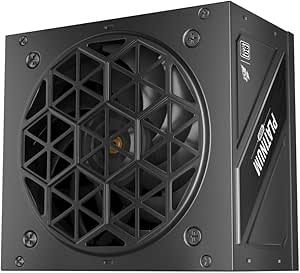
Buy NGDP Platinum
- Improving the product from reviews
- Compact design
- Native 12V-2x6 12VHPWR cable
- ATX 3.0 certified (Cybenetics)
- Semi-passive and always spinning modes
- Solid electrical performance
- Solid part choice and build quality
- Embossed cables with included combs
- Older revision has a significantly worse fan
- No multirail OCP
- Modular PCB is slightly underspecced
Alternatives
Silverstone Hela 1300R
Buy Hela 1300R
- Compact design (140mm)
- Higher capacity
- Significantly more expensive
- Hard to find in stock
Corsair HXi 2023
Buy HX1000i
- Most common pinout for aftermarket cables
- More quiet
- Semi-digital platform
- Definitely not as compact (180mm)
- Triangles
Adata/XPG Cybercore II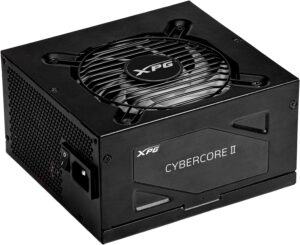
Buy Cybercore II 1000W
- Most common pinout for aftermarket cables
- Often found significantly cheaper
- High quality Nidec fan
- Not as compact (160mm)
Corsair RM1000e 2023
Buy RM1000e
- Most common pinout for aftermarket cables
- Often found significantly cheaper
- Easy to find in stock
- Compact design (140mm)
- Lower efficiency
- Triangles
Corsair RM1000x Shift
Buy RM1000x Shift
- Unique cable design
- Very common cable pinout
- Easy to find in stock
- Doesn't work with all cases
- Definitely not as compact (180mm)
- Lower efficiency
- Triangles
Montech Titan Gold 1000W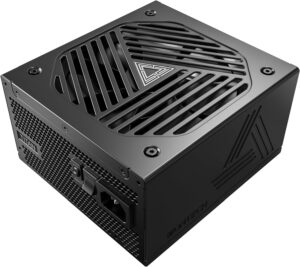
Buy Titan Gold 1000W
- Cheaper
- More quiet
- Close to platinum efficiency
- Not as compact (160mm)
- Lower efficiency
Vetroo GV1000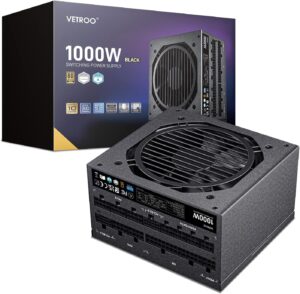
Buy GV1000
- Often going on discount for an insanely low 120 USD
- Dual 12VHPWR connectors
- Compact design (140mm)
- Meets ETA Platinum
- Reports of coil whine
- Uncommon outside of the US
